Had the privilege of joining “TWIG” (This Week in Games) – a podcast by
Miska Katkoff, Joseph Kim, and Eric Kress talking about the latest trends in Games. Check here for a listen:
Big thanks to Miska, Joseph and Eric for having me on!
Had the privilege of joining “TWIG” (This Week in Games) – a podcast by
Miska Katkoff, Joseph Kim, and Eric Kress talking about the latest trends in Games. Check here for a listen:
Big thanks to Miska, Joseph and Eric for having me on!
Michail (Miska) Katkoff and I spoke at GDC this year, deconstructing two games we felt have shifted design in the mobile market since last GDC. Miska took on Brawl Stars, while I deconstructed a game called Idle Miner Tycoon.
Here are our Slides:
So how did Idle Miner Tycoon do it?
But overall, can Idle actually expand? Can Idle grow to larger players? Most likely not within 2019. My prediction is that it will remain with smaller developers, simply because of the caps on the audience that exist so far. However, there are 3 clear areas of growth that a small or mid-sized developer can take advantage of:
The idle game genre has been heating up quickly on mobile. What was once a small indie niche has been expanding rapidly over the last years. So how do you, as a developer, take advantage of this trend? How can you create the next idle game idea that will dominate the market?
This is a follow up to our Top 10 Game Mechanics for Hyper Casual Games article that you might also enjoy
Idle game mechanics are nothing new. Anthony Pecorella of Kongregate diving in deep into the trend back in GDC 2015, but moving into 2019 we’re seeing some advancements in the trend.
I remember playing Cookie Clicker, Adventure Capitalist, Tap Titans, and the mountains of clones of the simple idle game landed in 2014, but then the trend died out. Yet something changed. Starting in 2016, we’ve actually seen a big resurgence of the mobile idle game genre:
Aggregate downloads and revenue growth for mobile idle game genre from Q3 2016 to Q2 2018
Source: Sensor Tower Estimates
Looking at idle games from 2014 to 2018, we can see a growing trend for both downloads and revenue in this genre. This is not the case for most of the mature genres on mobile. Puzzle, Simulation, Casino, and Strategy all have stabilized or declined in downloads, and seen slow growth in revenue. These genres are locked up, but Idle remains a hotbed of innovation on the mobile market.
In the last years we’ve seen a lot of completely new styles of idle game mechanics hit the market and see success: Merge Town by Gram Games challenged the assumption that idle games were only for spreadsheet-savvy mathematicians, Trailer Park Boys by East Side Games shows a path where Idle games can actually host a compelling narrative, and Idle Miner by Kolibri (previously Fluffy Fairy) shows that idle games can create compelling traditional simulation-style game loops.
For this post, I’d like to showcase the variety of paths to success that an idle game can have. While this may be focusing solely on the past, the hope is that this can inspire you to create better idle game ideas for the future.
If you’ve been living under a rock and don’t understand what idle is, we’ve covered it a number of times: (we’re fans here at MFTP)
Idle games have risen on mobile because it is a genre that is perfect for modern mobile free-to-play design. The mechanics of idle games create perfect mobile sessions and drive strong long-term retention.
Idle games, sometimes called Clicker or Incremental games, are games which are all about management of income. Similar to simulation games, their main differentiator is the focus on revenue growth decisions. For some examples: Idle Games on Kongregate / Reddit’s Guide to Idle Games
The key to the genre: no matter what you choose, you will make progress. But optimizing your decision about what upgrades to purchase next is the core of the strategy and what drives long-term interest in the genre. Because the core of the game is focused on long-term purchasing decisions, retention is built in. Because progress is always felt, it always feels rewarding to come back.
Let’s now dive into the variety of mechanics within the idle genre.
The core of these games are usually insanely simple: tap as fast as you can to generate income. This starts off as fun, but gets pretty tiring and uninteresting quickly. So it quickly shifts into deciding over which upgrades to spend that cash on:
This decision-making structure has stuck with idle, but the core gameplay of tapping as fast as you can has not.
Over time, developers tried changes to the core gameplay to make it last a bit longer: Make it Rain! and Farm Away used swipe controls instead of tap to make it more mobile friendly. However, the core mechanic always quickly became a bore, and the appeal of just swiping or tapping as fast as you can to progress is only appealing to some.
Also, due to the nature of the game, prestige mechanics became a necessity. Pushing the player to reset their progress back to the beginning in order to make the growth more manageable and ensure the player still felt growth in the slower endgame. This was never all that appealing to players — so developers had to find clever ways to sidestep the issue and incentivize the full reset.
It’s important to note that this style of game has gone out of fashion. Besides Partymasters (pictured), there haven’t been many successful new titles that only use clicker gameplay or similar. The resurgence of the genre has actually been on taking the progression mechanics learned in this genre and applying it to whole new mechanics, whole new audiences.
So what do you do when clicking style gameplay is uninteresting? Take the same progression system mechanics you know work well, and graft it onto more compelling core gameplay. Enter Voodoo, who mastered this approach throughout 2017 and early 2018.

Instead of asking the player to tap to earn their coins, Voodoo asked them to play simple arcade games that have mass appeal. Games like “Idle Invaders” used classic shoot-em-up gameplay (ex. Space Invaders, 1942) to earn their income manually. Shoot down incoming invaders as fast as you can to earn your manual income, and then purchase and upgrade computer-controlled allied fighters to fight alongside you. This made for a compelling formula, that was easily replicated across multiple genres. “Idle Sweeper” took Pac-Man, “Idle Flipper” took flipping style gameplay.
Any simple arcade gameplay which had an opportunity for scaling health/damage and computer-controlled assists could create a compelling new idle game.
Planet Bomber was the first to expand on this formula, adding more depth to the game by adding more types of upgrades. Before, games would offer linear upgrades to damage dealt, or income generated. Planet Bomber now offers upgrades across a number of parallel vectors, all with a variety of importance to the core gameplay. This creates a far more compelling long term strategy, and is what future idle games will need to focus on. How do you find core gameplay that can offer a variety of upgrades that are equally visible and impactful to progress?
The merge mechanic was first pioneered by games like Triple Town, but turned commercially successful by Gram with Merge Dragons and Merge Town.
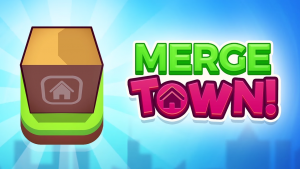
Merge style games take out the tiring clicker gameplay and swap it for merging items: drag and drop duplicate items on top of each other to increase their level. What’s a simple premise turns into an addicting experience, because the game always feels like there is something to do. Sessions are impressively long because it’s just so compelling to constantly build up your houses towards the next goal. The next goal is so clear (I want to upgrade my best house), and the path is clear (merge until I get a duplicate) — yet as soon as I complete a goal, I’m compelled to start the next path.
What Merge Town did more than just increase the session length was bring in an entirely different audience. No longer are idle games just about increasing numbers, but giving clear visual progress. This type of gameplay is for a much broader audience than most idle games, yet kept all the engagement mechanics intact.
Simulation has been on the decline on mobile for years, with Sim City Build It and Fallout Shelter (arguably) being the last big games in the space. Yet on Idle, in the last year we’ve seen a new face of simulation games: Idle Simulation. Wheras Sim City Build It, Farmville, Hay Day may appeal to a older, broader demographic, Kolibri’s “Idle Miner Tycoon” and “Idle Factory Tycoon” have shown a compelling business case for using classic simulation game loops.
Unlike the previous idle game mechanics, idle simulation games don’t innovate in the core gameplay. In fact, with Idle Miner and Idle Factory — they remove a core mechanic altogether. Tapping fast no longer helps you — the game stays compelling by asking you only to be managing your upgrades, and managing what boosters to start. This used to be an issue for idle games — since idle games typically had to start slow and progress quickly in order to give you a sense of progress, tapping gameplay was an easy out for designers to give a player something to do between upgrades. With simulation games, the upgrades are fast, but also far more strategic. As such, it doesn’t need tapping style gameplay as a crutch.
These games rely on a traditional simulation game loop, similar to compulsion loops you felt in games like Sim City (the original) and Roller Coaster Tycoon. Purchasing one upgrade will strain another system. In Idle Miner, purchasing an upgrade for a mine will mean that mine generates more income per second. This puts a strain on your elevator — the elevator then needs to be upgraded in order to hold on to more resources. Upgrading that elevator will put a strain on your surface level extraction… This goes round and round straining each system giving you new goals with each step and avoiding upgrades feeling stale.
Idle Miner and Idle Factory aren’t the only games that have attempted this and succeeded. I’d recommend playing Crafting Idle Clicker, Reactor Idle, and Factory Idle on Kongregate. This genre has seen the biggest surge in downloads, and there is plenty of room for innovation to come. This is the category to watch for new developers.
One mechanic that hasn’t been done often on mobile, but more often on Kongregate is more “Management” style sims. Check out a game called “Groundhog Life”: this is a life management simulator, with obvious idle characteristics.
The core gameplay is replaced with choosing which system to boost. In Groundhog Life, you can choose how you want to spend your 24 hours each day: spend 8 hours or 2 hours sleeping? Spend more time at work, or studying? While your character is always making progress, whether they are progressing in learning a new skill, earning money, or being happy is down to the decisions you make. Each time you die, you pass on your traits to your next life — giving you a boost depending on your choices in the previous life. While there haven’t been many mobile idle games that have used this mechanic, this is by far the most addictive idle game that I’ve ever played.
Going in a different direction, there’s also innovation happening in how idle games have made prestige (resetting your progress) less punishing and more relevant. Trailer Park Boys: Greasy Money by East Side games is a masterclass in this. Many developers have attempted to graft licensed IP onto idle games, but none fit so well as Trailer Park Boys — in the last episode of every TV season, they end up in jail losing everything. East Side baked this into the game design: at the end of each season of generating a ton of cash from idle systems, the boys are caught by the cops and you lose all your money.
This creates a strong narrative arc in the game that makes sense in the idle game loop. Each prestige (which happens more often), the player gets a drip of story. This creates a more interesting long-term goal for the player besides just increasing their numbers.
The game has been a breakout success for East Side Games, and it’s why they’ve been slowly bringing on more licensed IP to work with. Their current game, “The Gang Goes Mobile” based on It’s Always Sunny in Philadelphia is currently in soft launch.
Lastly, is most likely the biggest in-app purchase revenue generating idle category: RPG.
Clicker Heroes and Tap Titans were arguably the first games in the genre — showing that you can add battle mechanics with an idle progression, but both games actually fit more into category #1 based on their real mechanics. RPG can offer more than just a facade for progress.
Non-stop Knight was the first to break into this space, by adding automatic RPG gameplay as the core, while asking the player to choose when to use their boosters. Instead of linear upgrades, the character then started collecting loot from random drops (thank you Diablo), collecting pets and unlocking new boosts. Non-stop Knight was revolutionary in its time, but in retrospect leaned too heavily on idle progression to make a compelling long-term engagement loop.
The king of Idle RPG is without a doubt Idle Heroes. Instead of leaving too heavily on Idle Progression, they took many of the progression systems from Heroes’ Charge and Galaxy of Heroes. More focus is on a gacha-infused progression system: collect a team of heroes, outfit them with the best possible gear, and compete in limited time events for the currencies you desperately need.
This level of complexity is likely the next step for Idle RPG games. Keeping the compelling simple core gameplay, but creating more strategy in how you create and manage a team of heroes, and building upon an economy which events are necessary to be competitive.
As you can see, idle game mechanics support a wide variety of game designs. Don’t just assume the tried-and-tested clicker gameplay is the only option when coming up with idle game ideas.
Idle, unlike most genres on mobile, has a lot of room for innovation. It’s created compelling business cases for many successful gaming companies on mobile, and as a genre has plenty of room for newcomers to enter into. As a designer in this space, I would take a look at what has been done and predict what will come into the future:
If you keep this mind, my hope is that the idle market will continue to innovate for years to come!

When coming up with new game ideas, you often want to look around you for inspiration. Most great games are often a merging of two mechanics with a twist of innovation. I like to use the 90/10 rule. Stick with 90% what you know and try to create a 10% twist. As I mentioned in the Voodoo article, Voodoo doesn’t care about your game design, they care about the market’s perception of your game design. For them whichever game succeeds is how they will grow, but for game developers, history is a valuable teacher and seeing what worked in the past can help in the future.
Here’s a breakdown of the current top 10 game mechanics for hyper casual gaming on the app store and what to remember when building a game using them.
You might also enjoy our follow up article to this, in our Top 7 Idle Game Mechanics article.
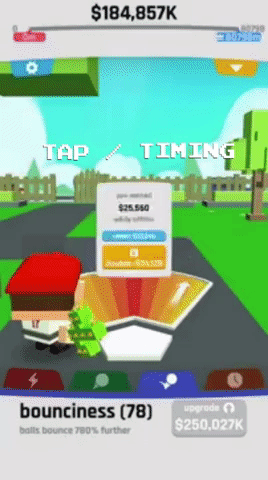
Tap and Timing games are the most popular form of mechanics for hyper casual games. Most of the other mechanics use tapping or timing as an input method for their particular gameplay. In a game that is pure tap and timing gameplay, the mechanic relies upon an exact tap or an exact timing. Precision is the most important aspect of the action and the focus for the user is perfection. Only the perfect tap will bring the maximum score. The rest of the games feel and creativity relies on exploiting small inaccuracies in the tap to reduce the player’s ability to win, usually in the form of a high score. The game Baseball Boy by Voodoo focus’ a players attention on a single baseball bat hit as the only action the player has. Every hit is exhilarating, but the perfect hit is dramatically better.
When thinking of tap and timing mechanics you must strip away any external or confusing factors for the player and provide a clear visual objective for a player to achieve. Visual feedback is extremely important here with a clear representation of a bad shot, but also a large positive reinforcement for the Perfect Shot. The clearer the goal, and the harder the perfect shot, the more fun it is when you hit it.
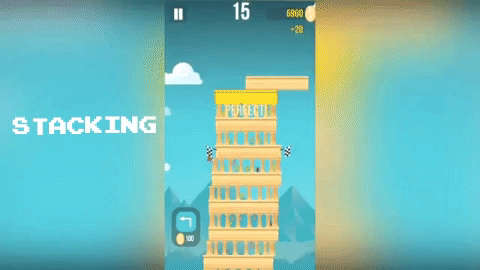
Stacking mechanics take the tap/timing mechanic further by adding your previous taps outcome to the progress of the round. The game The Tower by Ketchapp is a good example where the Tower itself is made up of the previously stacked squares. Every time a player fails to get a perfect stack, the tower itself shrinks, making it harder and smaller for the next stack.
Stacking mechanics provide more points of failure for the players, with each failure having a smaller effect than a Pure Tap game. They soften the failure by allowing you to continue, but they maintain the clear visual clarity of how that failure occurred. The less punishing failure the longer the round, but long rounds also signify a sense of ease.
When thinking how to design with a stack game in mind, make sure players have enough points of failure (5-10) before you end the round, but make sure the difficulty is hard enough that players get non-perfect timings at least 20-40% of the time. Too few points of failure the game is too hard and too many perfect timings the game is too easy.

Turning is the last of the tap and timing themed mechanics. It adds a further complication to each tap by adding a confusing visual perception. Humans visual cortex has an in built weakness at judging lengths between horizontal and vertical shapes in a 3D space. The visual cortex can be tricked quite easily and many visual illusions demonstrate it, The Ponzo Illusion, is a good example. As a designer you’re still only asking the player to time a single tap but with the added confusion of the 3D space players are more likely to get this wrong. This is much harder to master than the 2D Stack-based approach.
Good turning based gameplay is usually more forgiving than stack-based gameplay, resetting the player more frequently and letting them get back into a perfect streak even after making mistakes. As a designer you want your players to make clear mistakes that end in failure, the more obvious those mistakes the less frustrated a player becomes. Turning games also work best when the angles are 90 degrees or repeating sharp angles, simply because the brain can learn to overcome it’s own weakness, through trial and error! You must be more lenient than other hypercasual game mechanics because people simply don’t believe their own eyes! Oh the power of the mind 👀
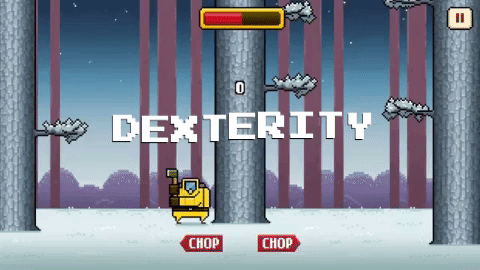
These games mainly focus on a player having a very simple and repeating action that they must perform many hundreds of times. With enough practice, these mechanics can be mastered by dextrous players and so the highest score is a fair representation of dexterity and skill. For these games to be fun the game must usually speed up, taking a mechanic that might be easy to slowly, but when pressurised by a time becomes more and more likely you will make a mistake.
You still need a clear hard limit to success usually a single life or single mistake ends the round and you start from the beginning. Timberman by Digital Melody is a great example of taking a player’s full attention, timing and dexterity to create a challenging points based challenge. When designing these sort of games you must make sure the controls and input sensitivity is the highest priority. There can be no lag and no grey areas, a players action will directly affect the character immediately. A player will be inputting many hundreds of taps per round, each tap must be accurate for it to be fun, any inaccuracies or lag are multiplied by the number of times you input it.

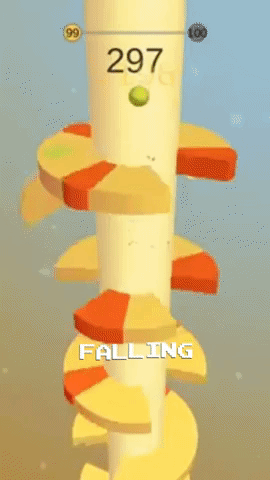
——
Rising and falling mechanics provide interesting journeys for their players. The constant progression of the level leads to the feeling of progression without a change in the mechanic or goal. To keep people entertained the level itself must develop. Rise Up by Serkan Özyılmaz and Helix Jump by Voodoo show how progression develops as you traverse up or down the game.
The player’s focus is on dealing with the next challenge along the progression and less about accuracy. There are many ways to win these levels, a little luck is often needed over timing or skill. Your only goal is to protect an object from a single point of failure.
The journey develops pressurising environments and the players end up creating lots of self-inflicted problems. Small issues early on can cause much harder moves later. Good design here focus’ on players have 1 or possibly 2 problems to deal with at a time, but the nature of the problem changes as you rise or fall through the gameplay. Try to think in stages and work on each stage being fun on it’s own, adding them together creates the dynamic journey.
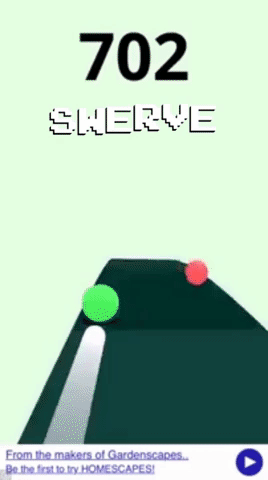
The final arcade based hypercasual mechanic is the swerve mechanic. These games focus on using the drag of a finger to avoid obstacles. Most of the time they are avoidance based mechanics in a similar vein to rising and falling, but they also focus more on dexterity than timing. Swerve games maximise the touch screen controls and are hard to recreate on other devices. This gives them an original feeling and a cool use of touch inputs.
What’s important here is that the game focus’ on a player accuracy of input from dragging and sweeping a finger, rather than timing a tap. The size of the object, the speed of the object has a big effect on what people are able to do with their fingers.
In the same way, as dextrous games focus on removing inaccuracies, swerve games need to focus on the input feel of your finger. Players will play for longer if the game feels fun and the near misses feel, super near. Work on making the game reward players for near misses and replay their errors to show just how close they were to almost avoiding death to make the game more fun.
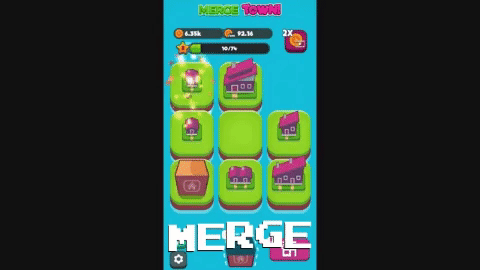
Merging mechanics are very easy for players to understand. Similar things combine, different things don’t. The game then becomes very easy for people to get right and with each subsequent merge, a new piece of understanding and a strong sense of progression is conveyed to players. Complexity and challenge in this game usually come in the form of a metagame, something that non-casual games rely on, but for the casual audience, the metagame can be divisive, making the game too complex and turning people away from playing.
Merge games do well because the metagame is incorporated into the main game. The mechanic is very visual and you can see how your action is causing the merged units to be different from one another. For a merging game to be successful, don’t break the golden rule, embrace the golden rule – Similar things combine, different things don’t. You then need to make merging feel fun, animate, excite and surprise players with each new find. The clear sense of progression along with the ever-increasing challenge, due to exponential growth, of merging to the next stage will keep people playing for longer.
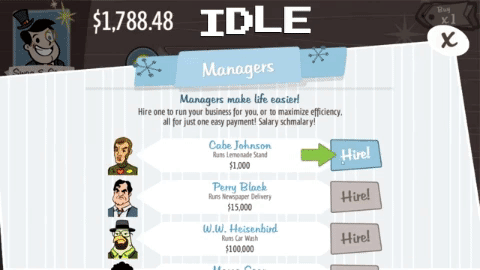
Idle as a mechanic has been used in hyper casual to mid-core games for a number of years. The complexity and reliance on the mechanic is a choice by each game designer. At its core, it is any mechanic that doesn’t require input from a player in order to progress. Obviously, no input at all is a very casual experience, but also one that without an objective becomes boring. Most of the time idle mechanics form a secondary mechanic attached to a soft currency. This works well because over time players earn more money which they can spend in their core game experience.
Adventure Capitalist by Hyper Hippo made the idle mechanic the core focus of the gameplay and built a game around repeating the mechanic with different growth rates. It became successful because of the interplay between the rates and the addition of ascension mechanics which force a player to lose all of their progress in the current game for increase speed of progress in the next game.
For idle mechanics to be fun, they need to be balanced. The biggest issue with the genre is bad maths. Either the game reaches incredibly hard to overcome peaks of progress or totally boring plateaus of progression where the numbers and growth mean nothing in the real game. Be careful and make sure you use your excel skills to their max if you want to rely on idle mechanics.
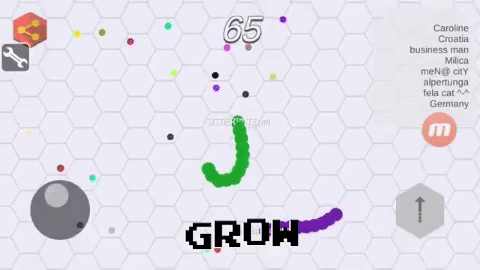
Growing mechanics are very similar to idle mechanics in that they are usually independent of the core control input but do form the core gameplay objective. Winners in this hyper casual genre are always the largest and in some cases can eat other players, in essence ending a round. The gameplay mechanics themselves are very clear, yet developing a fun experience and one that scales is reasonably difficult for this genre.
You need to think a lot about player density when designing games that grow. Obviously, all players want to grow, but not all can. Starting the correct number of players in the correct space and with the correct amount of food is what makes this genre fun. These games also become exponentially more fun with other real people playing them and have so far formed the .io genre on the store. The number of fitting gameplay mechanics for this genre is limited but the games have a longer lifespan than other hypercasual games because of the interactions with other players.
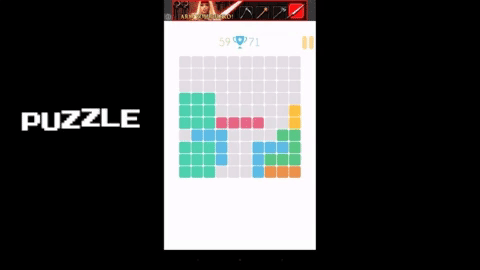
Puzzle is a genre in itself, but hyper casual puzzle games focus on simplicity rather than complexity. A good hyper casual puzzle game usually has no end. Players are simply asked to continue to play the puzzle for as long as possible and the game will not increase the difficulty. The mechanic itself must grow in complexity via the users’ actions. Good examples are 1010! By Gram Games or 2048 by Ketchapp. In both cases, the puzzle rules are set at the beginning and the board develops as you play. Unlike other board games such as Chess or Chequers which have clear end goals, hypercasual puzzle games usually have no clear end and it’s simply a case of lasting as long as you can.
These are the hardest genre of hypercasual games to develop because they are usually very clear and defined mechanics that are unique to the game itself. This is because it is very hard to create a mechanic that over time doesn’t change the gameboard into something that is too easy or too hard. Board Games are usually a great place to look for tried and tested mechanics, but make sure you chose ones that require very few rules otherwise you will lose your audience in the explanation.
Please share in the comments if you feel there are any other hyper casual game mechanics worth mentioning or any other hyper casual games ideas that you like and we’ll update the article!
Trailer Park Boys: Greasy Money is an unusual idle game. The game features a very niche license and very unconventional gameplay. It defies many of the genre’s conventions, adding elements like an episodic linear narrative, very rigid ascension requirements, and an extensive gacha system that is woven deep into the game’s core. Yet the game has managed to be both a commercial and critical success, averaging at least a 4.5 star rating on every version and setting revenue records for the idle game genre. This is an insider’s view of how this unconventional design was born, and how and why it works.
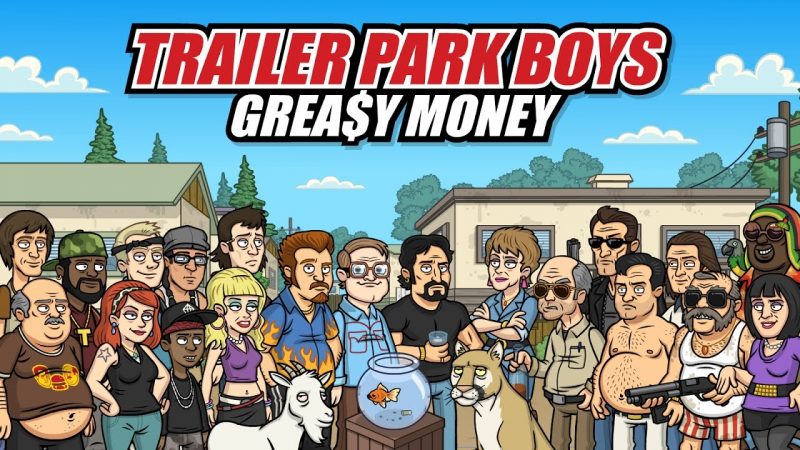
My name is Dave Rohrl, and I’ve been producing and design games for almost 25 years. I currently run a small game design consulting company that helps mobile game studios all over the world solve challenging design problems. I was approached by East Side Games in early 2016 about mentoring some of their development teams and helping out on their new products.
The company was in development on a Trailer Park Boys-based idle game. The game made a number of critical design errors. The game had three main screens, each with a different activity, in honor of the franchise’s three main characters. All three screens were of critical importance to play the game. This made it difficult to articulate and focus on the creative center of the game.
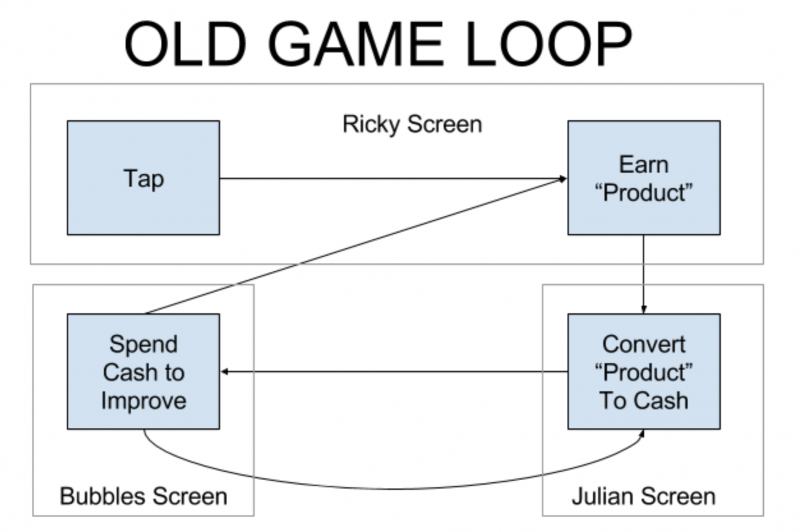
The first module screen required constant tapping to prime the pump of the economy. This is a common design mistake made by newcomers to the idle genre, who often assume that clicker games are about…well…clicking. As ample research has shown, this is not at all their core. Rather, players enjoy letting the game passively generate resources between sessions so they can spend those resources improving their economies.
Newcomers to the idle genre, who often assume that clicker games are about…well…clicking… this is not at all their core.
The second module was an odd one. It again required tapping to convert the currency earned on the first screen into the game’s main soft currency – money. The user then navigated to a third screen, which allowed the player to spend money to upgrade the operations on the other two screens – possibly with some element of automation.
East Side brought me in to evaluate the game. And my feedback was quick, direct, and unequivocal. The game’s core design was not working, and needed a significant streamlining or a full reboot.
The team decided to restart the game using familiar core mechanics from idle games like Adventure Capitalist or Doomsday Clicker with a few enhancements supporting the IP. The player would build up businesses in the eponymous trailer park to earn money, to level up the businesses (which we referred to as acquiring customers), and occasionally fight the antagonist law enforcement officers that bedevil the boys. The existing team struggled to take the design further than this, so East Side asked me to partner with the game’s producer to lead the game’s design.
In addition to the usual requirements that come with any mobile game project, like building a fun game with good retention and monetization, the game came with some unusual requirements that we needed to accommodate in the design.
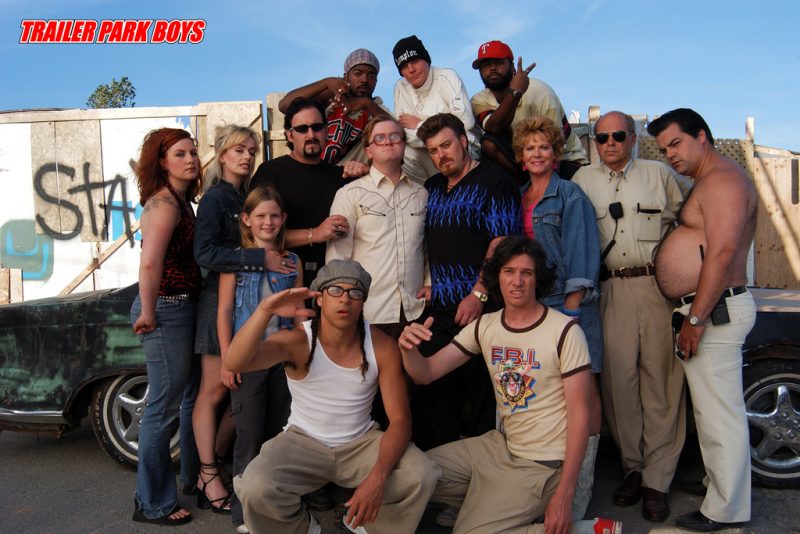
The game was, of course, based on a license. Trailer Park Boys is a faux documentary series, originally broadcast in Canada and now distributed by Netflix. It features the antics of petty felons who live in a trailer park in Nova Scotia, constantly trying to earn easy money through scams that the trailer park supervisors and local cops try to thwart. The show is a cult hit, with a small but very passionate following.
As with any licensed game, we wanted to make sure that we used the license to strongly shape not only the presentation, but also the core gameplay. We wanted the player to feel like they were running their own scams and getting their own a$$#s thrown in jail. And because the game was based on a strong character franchise, we wanted to feature the characters prominently in gameplay and to tell their stories in the show’s cheeky, hilarious tone.
In addition, the game was looking expensive on its original course, and rebooting the design certainly didn’t make it any cheaper. As a result, there was a lot of concern about the game monetizing well – particularly given that idle games are generally not high ARPDAU products. The team and East Side’s management looked around for ways to monetize the game better, and – given the fact that we were all playing quite a bit of Clash Royale at the time – it’s not too surprising that we settled in on the notion of adding a card upgrade system backed by a gacha (random reward) system to the game, supported by a secondary, non-inflationary currency – Liquor.
The original design for integrating stories into the game was to make short cutscenes and associate them with selected achievements, much like Adventure Capitalist associates its event rewards with reaching certain business levels.
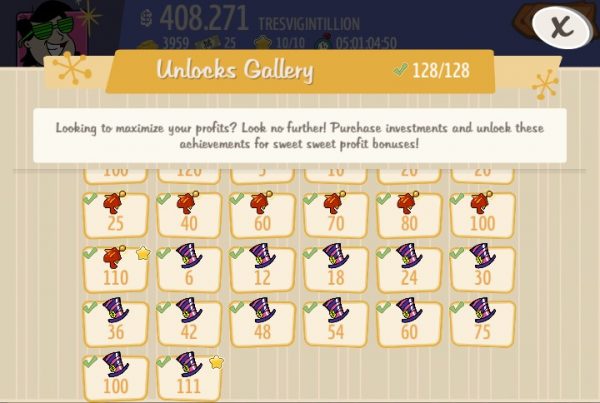
Unfortunately, I saw a number of issues with this approach. Players would enjoy lots of cutscenes early in the game, but as they became more established, cutscenes would inevitably drift further and further apart. As these rewarding plot interludes became less and less frequent, players could grow bored with the game and churn out.
We also couldn’t guarantee the sequence in which players would see cutscenes, so it would be impossible for us to tell real stories – just to offer one-off vignettes. This was a deal-breaker, as the franchise is heavily focused on episodic comedy storytelling.
Instead, I proposed a different approach to dispensing the story. We would break the game up into seasons, where each season would tell a single TPB story. Of course, the player moved from season to season by ascending.
We showed an intro scene at the beginning of each season, continuation scenes throughout based on the number of goals completed, and a finale scene just before the season’s final boss fight. This allowed us to implement a classic three act structure to build the kind of narrative arc that fans of the series love. It kept players playing for the concrete reward of seeing the next cutscene. Players got addicted to the end-of-season experience where they would experience a burst of fun activities – see a cutscene, play a boss fight, collect a bunch of rewards, and roll right into the next season’s intro cutscene and the fast early portion of the next season.

Of course, having decided to implement seasons, we needed a way to define for players to complete a season. We looked at other idle games that had implemented ascension requirements, like the cash requirements in Doomsday Clicker or the progress requirements in Tap Titans, but we found them pretty uninteresting. So we decided to lift a page from typical casual games and give the player a series of goals to complete. Once the player had complete enough of the goals we set before them, they could end the season, fight a boss, and ascend.
As soon as we added this feature to the game, the gameplay started to feel much more interesting. Rather than always buying the cheapest or highest yield business available to you, having player specific goals forces the player to focus on different aspects of the game at different times. This made the game feel more structured and gave players more opportunities to feel smart and strategic.
Our original system gave the player only one goal at a time. Although this was still fun, it led to real problems when the player was making slow progress toward their one and only goal. 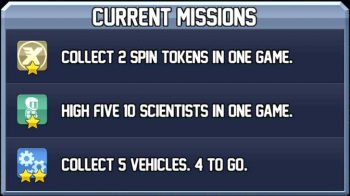 This was especially painful when the goal required some random rewards or other random elements. Jason Bailey, East Side’s Chairman, came up with the idea of having 3 goals available at all times, similar to Halfbrick’s Jetpack Joyride. After a bit of experimentation, we settled into the final structure, giving the player three tracks of goals – one linked to earning and spending soft currency, one linked to earning secondary currency and gacha items, and the third related to spending secondary currency and gacha. This led to a robust system that allowed non-payers to progress at their own pace while giving payers an obvious way to accelerate.
This was especially painful when the goal required some random rewards or other random elements. Jason Bailey, East Side’s Chairman, came up with the idea of having 3 goals available at all times, similar to Halfbrick’s Jetpack Joyride. After a bit of experimentation, we settled into the final structure, giving the player three tracks of goals – one linked to earning and spending soft currency, one linked to earning secondary currency and gacha items, and the third related to spending secondary currency and gacha. This led to a robust system that allowed non-payers to progress at their own pace while giving payers an obvious way to accelerate.
As I mentioned earlier, East Side Games’ management asked us to include a gacha system in the game to increase monetization. Since we all wanted characters to be central to the game, it was an easy decision to use the gacha system as a way to upgrade characters. And since we had businesses playing a central role in the game, it seemed to make sense to use the gacha system there as well. This gave us a critical mass of valuable items to create drops for.
Once we reached this decision, we needed to figure out how to integrate the gacha-leveled items into the game. We quickly decided to associate two characters with each business, and to have the level of the business and associated characters make each business faster or more profitable.
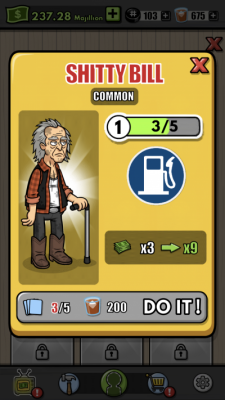
Unfortunately, this made the system completely optional. The player could engage with it and gain marginal benefits or ignore it and progress almost as quickly. A major turning point in the design came when we decided to require certain character levels to automate businesses. Automation is a critical part of any idle game design, and forcing players to interact with the gacha system to use automation meant that every single player would be chasing cards and Liquor to be able to advance. This had a huge impact on the game’s monetization, which is much higher than most other idle games.
Ascension systems are core to idle game design. After the player has played for a while, their progress slows down a crawl because of the structure of the underlying math. The player then decides to restart the game (often called ascending, prestiging, restarting, or a variety of other names). When they restart, they earn a special currency that tweaks the game math in some way, generally allowing them to progress faster.
This well-worn system has a number of issues. Deciding when to ascend can be very awkward for casual players, as it requires a good understanding of the game’s math and ascension system. And ascension currencies tend to be a bit abstract and weird. And the story behind why the player is restarting the game from the beginning is thin or altogether missing.
In TPB, our season and gacha systems solved major problems with the ascension system. Because the player cannot ascend until they complete enough goals, the game gives them a clear signal on when they should ascend. Of course some of our more engaged players play on long after we let them move on to the next season, but at least our most casual players don’t have to sweat the decision.
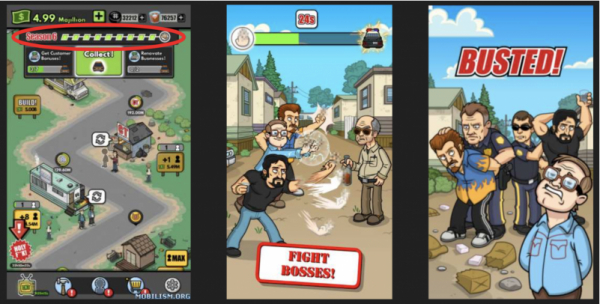
Likewise, rather than having an ascension currency, we simply carry the player’s character and business levels forward. Since the player has built up those bonuses during gameplay, it’s only natural that those levels should be maintained and carried forward.
And the story of ascension fits the license like a glove. On the TV show, the boys are constantly getting thrown into jail for one reason or another, usually for their ridiculous scams and petty crimes. In Trailer Park Boys: Greasy Money, we used that trope from the show to explain our ascension mechanic. When the player resets the game, it’s because the boys lost their fight with the police and got thrown in jail once again. And with the boys gone, their business empire falls apart and needs to be rebuilt. This perfect alignment of mechanic and narrative has been one of the most beloved features of the game.
Although all these design elements helped make the game into a success, they all created significant challenges on the design and production side – each in their own special way.
The stories themselves are a central element of the design, and they were surprisingly hard to get right. The TV show’s stories have a very particular flavor, and getting the humor, pacing, and character relationships in good shape required many iterations. In addition to going through a number of contract writers looking for folks who really got the IP, the team put in many nights and weekends working to get the narrative on point. But because we knew that the game’s core audience would be super-fans of the show, it was critical that we kept going until we got it right.

The use of goals and seasons made the gameplay sing, but that came at a price. Instead of just needing to create a fun progression with inflection points for each business, we needed to carefully hand-craft a set of goals that could be completed at exactly the right cadence to keep the player engaged while dragging just enough to create real incentives for monetization. This is an incredibly ticklish balance that requires significant playtesting and iteration for every single season, and we sometimes get it wrong. We are constantly looking at player data and re-adjusting existing seasons.
The gacha system added great monetization, but also added a lot of randomness to the player’s state. It would be very possible for two players who have progressed equally quickly to suddenly diverge over the course of a season because one had the right characters upgraded for that season while the other did not. This meant that accurately forecasting how long players would take to complete seasons and goals was very tricky and our estimates were often off by a good bit.
We also did very well at engaging players with the character upgrade gacha system, but never found the right mechanic to generate similar levels of engagement with building upgrades. We had a few ideas, but none of them have made their way into the game yet.
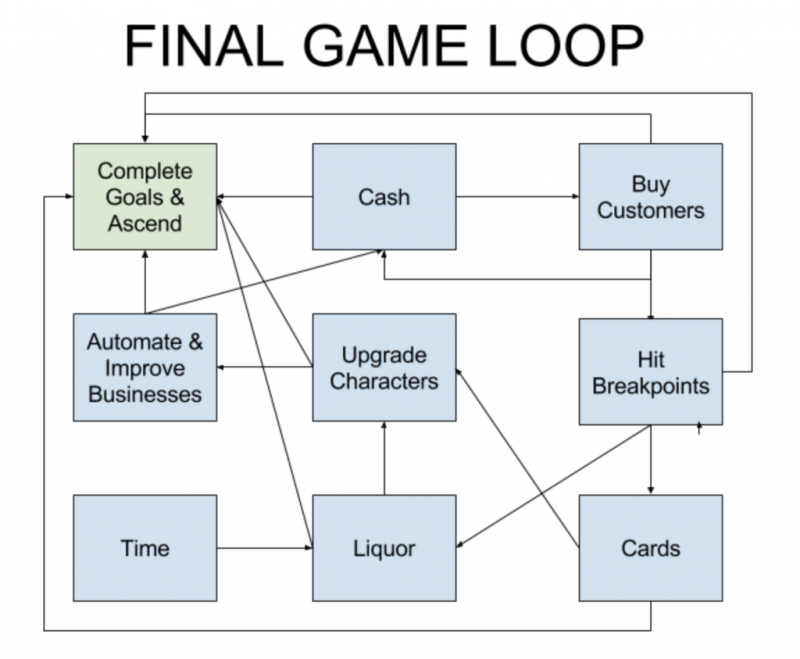
Trailer Park Boys: Greasy Money release on April 20th (4/20 – get it?) and shot up the download and grossing charts. It set records for daily gross revenues for a mobile idle game and drew rave reviews from critics and users (still over 4.5 stars on the Apple and Google app stores). Now nearly six months old, the game continues to generate great revenue and goodwill as we continue to roll out linear content, new events, new features, and new platforms.
There were a number of critical design decisions that contributed to this success, but in my view the three most critical were:
Dave Rohrl is the Owner of Mobile Game Doctor, a boutique game design consultancy that works with game developers worldwide to improve their games, teams, and processes. Dave is an industry veteran with nearly 25 years of experience who has held senior roles at Pogo, PopCap, and Playdom, among others. He lives in the San Francisco Bay Area with his two daughters and 600 board games.
Rewarded Video Ads have been a constant, dominating trend in free to play over the last few years. Starting with companies like Ketchapp and Futureplay, it became abundantly clear that games can drive meaningful revenue from video advertisements, and advertisers can find a captive audience in mobile players. In the last couple years, Video Ads have reached a tipping point. No longer seen as superficial revenue on top of IAP revenue, designing for video ad revenue has become the dominant revenue growth area for free to play companies. Designing for video ads has allowed for innovation in the maturing mobile space that is much needed.
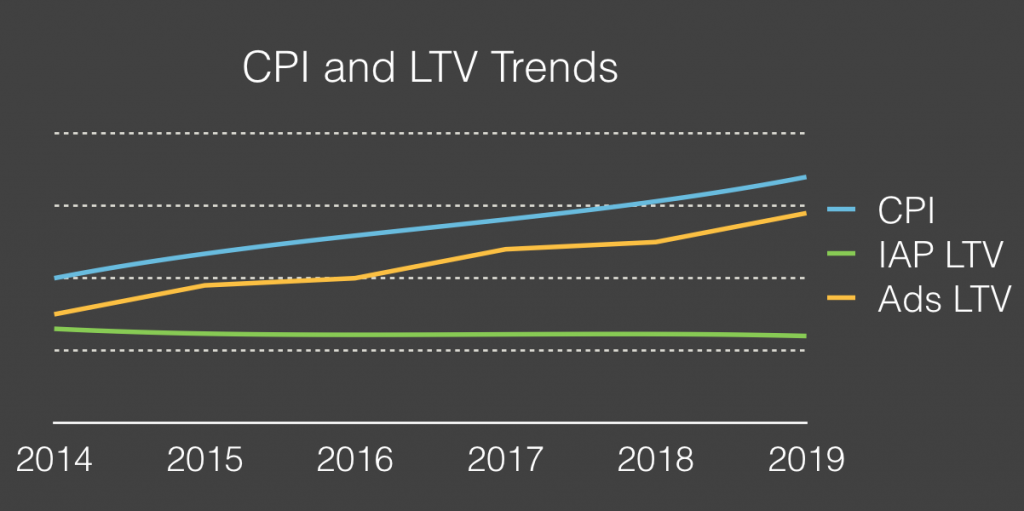
Source: SOOMLA Blog (an excellent source of info on Video Advertising!)
The rise of Video-Ad driven monetization has heralded in a new era within mobile game design. The casual segment has been dominated for years by the Match 3 Saga model with other casual categories struggling for meaningful revenue (ex. “with Friends” style games). Video Ads have opened up these categories because it monetizes on 100% of your user base. Instead of having to awkwardly cram in In-App Purchases into a casual title, developers can monetize off their active playerbase even if they don’t have a meaningful economy with anything to sell.
“The rise of hyper casual” it is called. Summarized here by Johannes Heinze of AppLovin:
“Players of hyper-casual games can be acquired at extremely low rates, so even though CPIs are increasing and gaining traction in the app stores is difficult, developers of hyper-casual games have a lot of opportunities. Hyper-casual games tend to be less costly to make, and users monetize almost immediately since ads are the primary revenue source, meaning that UA campaigns can be optimized early on. Hyper-casual games make the biggest share of revenue in the first couple of days, unlike IAP-heavy genres, where the most active users make the most money over time.” – Johannes Heinze, AppLovin
The rise of hyper casual category is exciting because it goes counter to what traditional free to play games have been moving towards: massive budget, multi-year long productions that are getting riskier and riskier. Hyper casual games are innovative, quick to make, and easy to market when done right.
Gram Games is one of many that successfully capitalized on the hyper-casual trend. Games like 1010! And Merged were quick to make, yet clearly generate more than enough revenue to support the mid-sized Turkey-based studio (now with an additional studio in London).
Gram Games’ most recent launch is “Merge Towns”, a mashup of a puzzle and idle game. The game has peaked at #3 top free downloads in the UK, and is within the top 20 downloads in the US. This game clearly shows the latest innovation in the video-ad driven monetization space and is an excellent guide for newcomers to space. Not only does it have strong proven video ad integration, it also supports an innovative core gameplay. Let’s take a closer look.
Merge Towns at the purest concept level is a Matching game core combined with an Idle game economy.
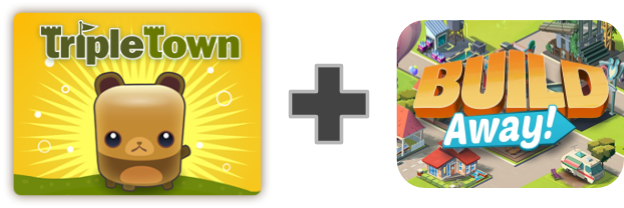
The core gameplay mimics that of Threes! and Triple Town in that you attempt to combine multiple of the same block to upgrade the square.
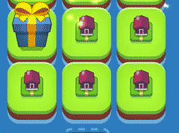
You can see above how the core is built. You can drag and drop any piece on top of another piece of its kind. There are no restrictions like Triple Town or Threes. Placing the same tier of a piece (a small house) on top of the same tier will upgrade the house to the next tier (a piece with 2 houses). This carries forward and forward throughout the game, creating more and more intricate pieces.
Whereas the goal in Threes And Triple Town was simply to survive for the longest time possible, Merge Towns is more akin to an Idle game. There are no failure states, there is just optimization of progress. Your goal is to generate pieces — so you can combine them — to make better buildings — which generate more revenue — to purchase better pieces. The core gameplay moves like this:
1. The first step is about generating pieces. Players can do this by rapidly tapping on a button, or by waiting.

2. With the generated pieces, players combine them to upgrade them and make space for more land and new pieces to fall.
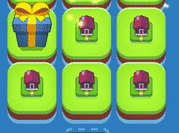
3. With the upgraded buildings, these generate faster soft currency.
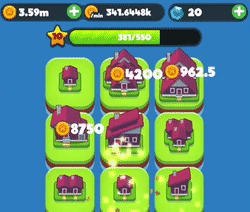
4. With the soft currency, players can purchase better pieces directly
Overall the gameplay feels significantly more approachable and casual than Threes or Triple Town. For Triple Town, the restrictions on movement and the loss condition make for a far more difficult puzzling experience. Merge Towns feels much more like a new take on an idle game mechanic (ex. Farm Away and Build Away’s core gameplay which is deconstructed here). Instead of simply asking players to tap-tap-tap their way to progress, they’ve added a thinly more involved matching mechanic which feels satisfying to complete.
Players don’t even have to pay that much attention to the numbers, the core gameplay of simply matching the highest tiered object possible works well on its own. It’s not so much a puzzle as it is just a pleasurable action.
What this says to me is that the key part that works for the Idle genre is the metagame and the economy. Clicking over and over again is just a relic of the Cow Clicker days — to innovate in this genre it will be about combining the economy of and idle with interesting core mechanics which have significantly more interest than tapping over and over. Merge Towns executes on this. Merge Towns appeals to a wide casual market while having the lasting economy of an idle.
To integrate the Idle economy with a new gameplay took some workarounds by the design team. If players can upgrade buildings on their own, what is the value of the currency generated?
Gram Games answered this by making soft currency the time skip currency. Players can purchase upgraded buildings directly with their soft currency, allowing them to make progress significantly faster as the economy naturally slows down with the exponential nature of the design.
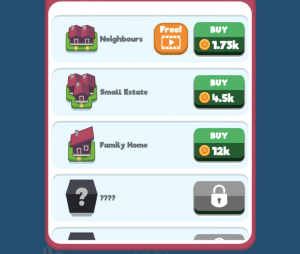
Players thus enter the store as part of the core loop, constantly aching to spend their soft currency to speed up their progression and purchase the highest upgraded buildings possible. It feels like an Idle economy, where I’m constantly making purchases to upgrade the rate at which I’m generating soft currency, but this feels very different. Something that all designers must strive for.
As time goes on, Merge Towns eventually opens up more tiles in which you can place pieces giving a small sense of Visual Progress. Your town can now get bigger and bigger. However, eventually, things do get boring as a usual idle economy does. Eventually the next major upgrade gets farther and farther away.
To keep players engaged when progress slows down most idle games use a prestige mechanic, forcing players to reset their progress in the current area. To make this appealing, games usually offer a permanent progress boost to the player, making their subsequent resets of progress allow them to get farther and farther in the progression. Merge Towns breaks this formula, and instead opts for a more heavy-handed design.

Eventually, new tabs open up on the right which introduces the player to new areas of the game. This offers up an entirely separate town to build up. Their soft currency is completely different, so progress in the first zone does not help at all to progress in the second zone. This is a far break from their idle game roots.

This design decision has some pros and cons.
On the one side, it feels casual because I don’t actually lose any progress — my initial town is still running and I can still keep upgrading it. All the visual progress that I’ve made upgrading my buildings is still felt. It removes the punishing feeling that most idle games can have.
However, it also means that my sessions will get longer and longer. While this game’s design already rewards players quite heavily for being active. As you progress the sessions continually get longer and longer to manage the multiple zones, making sessions more and more exhausting.
But in essence longer session length is what Gram games want. The longer their sessions — the more players stay within their game — the higher their Video Ads watched per DAU. Restricting session length too much actually isn’t in Gram Games favour. So Gram Games made the right design decision, as long as it doesn’t translate into exhausted players.
Advertising strategy always revolves around getting the highest possible adoption and driving as many completed video ads viewed per DAU. More on this in our previous article.
For Merge Town, because their economy is so based on the Idle economy, they didn’t have to reinvent too much. Merge Town mostly takes cues from the dominant idle games like Farm Away and Build Away. However, they do make adjustments to make them work with the core merging interaction.
There are 4 key integrations of Video Ads:
Each time a player returns to the game they are greeted with a choice. Watch a video ad to double the soft currency generated while they are away, or lose out on this deal. Just as we’ve written about before, this is a no-brainer.

This integration is great for driving a high adoption. Right from the outset there’s a high adoption integration. Some scarcity + a clear benefit make this easy for a high percentage of your DAU to accept. However because it’s limited, it’s not great at driving a high quantity of views.
Throughout the game, there are also smaller rewarded video ad integrations which allow the player to upgrade a given reward for the cost of watching a video ad.

These integrations are great at driving quantity of views, since players can utilize them throughout a session without restriction. In most games offering video ad rewards like this without restriction isn’t possible, it floods the economy or gives too much progress away. However in Merge Town, because the economy scales exponentially, a small boost like this actually doesn’t really dent the overall economy.
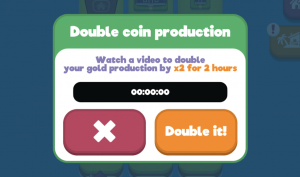
Similar to Build Away and Bit City (deconstructed here), Merge Towns gives the player the opportunity to double their overall coin production for an extended period of time for a video ad watch. This drives adoption (it’s an incredible deal) but is weak on quantity of video ad views due to its limited nature. This is also more likely for session design over monetization — giving players a compelling reason to come back to the game every 2 hours.
Lastly, Gram Games also has Ads forced upon the player when doing certain actions. When entering the shop (which happens multiple times per session) and sometimes when moving between zones (as you progress this happens more and more) you can be presented with a skippable full screen ad. They definitely are annoying, especially since they seem to appear randomly (most likely due to fill rates from advertisers).
Why would Gram Games opt for such a strategy? Isn’t rewarded video ads always better than forced?
This is most likely a strategy to drive the strongest revenue from players that won’t last forever. Merge Towns is a fun game, but it certainly won’t have the same staying power as traditional free to play games like Gardenscapes, Galaxy of Heroes or Clash Royale. But Merge Town doesn’t need to be like this. Not every game needs to be a 3 year epic hobby with clans and guilds. Which is why many of these video ad driven games are refreshing and are easy to market. They have instantly gratifying mechanics that most traditional free to play games wouldn’t utilize. Their design is simple making it easy to pick up and play compared to most free to play games.
On top of this, it allows Merge Town to monetize off the “No-Ad” version. Purchasing a In-App Purchase will remove the annoying ads, making their offers even more enticing for the power players.
So Gram Games’ embraces their shorter retention curve by their aggressive ad strategy. While it does no favours for their retention, they made a calculated trade-off between retention and revenue. If you know players aren’t going to be here a long while, retention isn’t king… revenue is.
By having innovative, instantly gratifying core mechanics, Merge Town has made a game that feels immediately new and different. This game must be easy to market.
By connecting it to an idle game economy they’ve built a game that can last, and drive meaningful integrations of video ads for sustainable revenue.
For game designers in the market, Gram Games have shown that Video Ads and Hyper-Casual games have opened up new possibilities in the market. Now it’s time for us as game designers to adapt and embrace it.
View-to-play is fast becoming the new dominant monetization model in the mobile marketplace. For the last few years, game companies like Futureplay, NEXT Games, Gram Games and Ketchapp have shown that you can create successful free-to-play games which drive sustainable revenue without focusing solely on In-App Purchases. Games like Crossy Road, Tap Titans, and Endless Runners like Despicable Me have reported that more than 50% of their revenue comes from video ads.
Creating successful Video Ad integrations is more difficult than simply rewarding a video ad watch with in-game currency. In order to generate enough video views, games need to be designed with video ads in mind. For video ads to perform well we’ve established four core principles of video ad monetization:
Futureplay is one company that have followed these four principles and built two games (Farm Away and Build Away) that use view-to-play to full effect. Founded in 2015 in Helsinki, Finland their focus is on shipping games based on the idle / clicker genre. If you haven’t played this style of game, I recommend reading our overview of Clicker/Idle genre:
Great interaction design and slick presentation make these games a joy to play. Let’s dive into how they integrated video ads into the core loop:
An Idle game’s core loop revolves around producing as many coins as quickly as possible. In order to do this, a player must purchase exponentially costly upgrades that increase their coin production rate. It’s a positive feedback loop.
The objective for a player becomes maximising the efficiency of earning currency. The skill in these games is choosing which upgrades are the most efficient. Rather than digging too deep, remember that for players, increasing the rate of earning feels powerful — and upgrades that provide 2X or 4X increases to your coin production for short periods of time feel very rewarding as progress is noticeably sped up during your session.
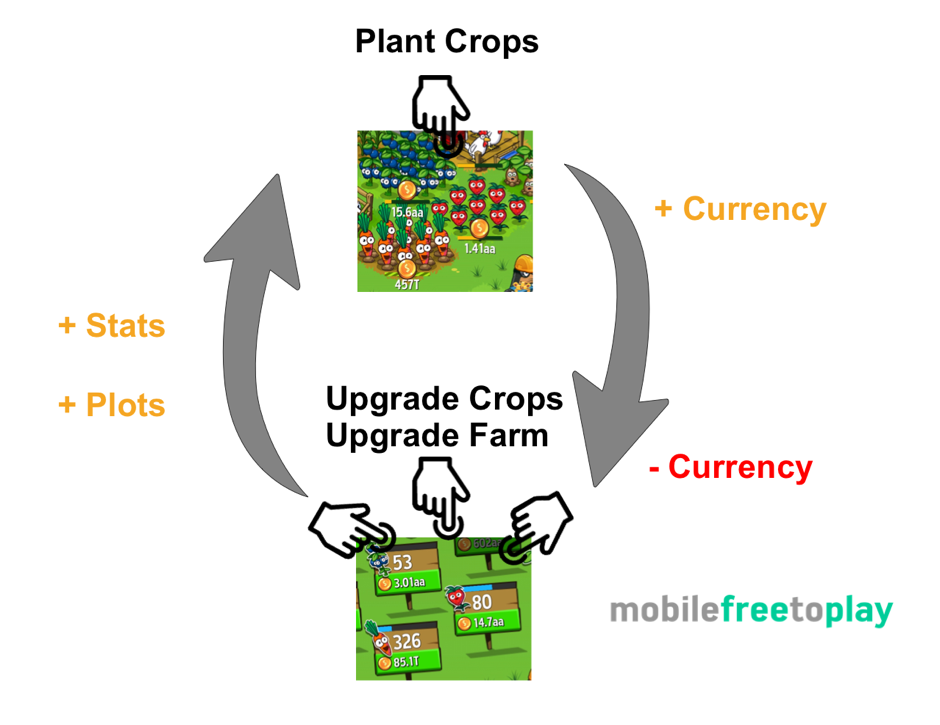
Increasing the rate of earning feels powerful
“Farm Away!” wraps the idle mechanic to planting and harvesting crops so that you can upgrade your crops and increase your rate of earning by buying more plots.
“Build Away!” uses a very similar system but you buy various building types and place them in blocks within a city.
Both games allow you to sacrifice all of your crops or blocks in order to get seeds in “Farm Away!” or keys in “Build Away!”. Investing into seeds or keys provide global growth bonus’ to help your future farms or cities.
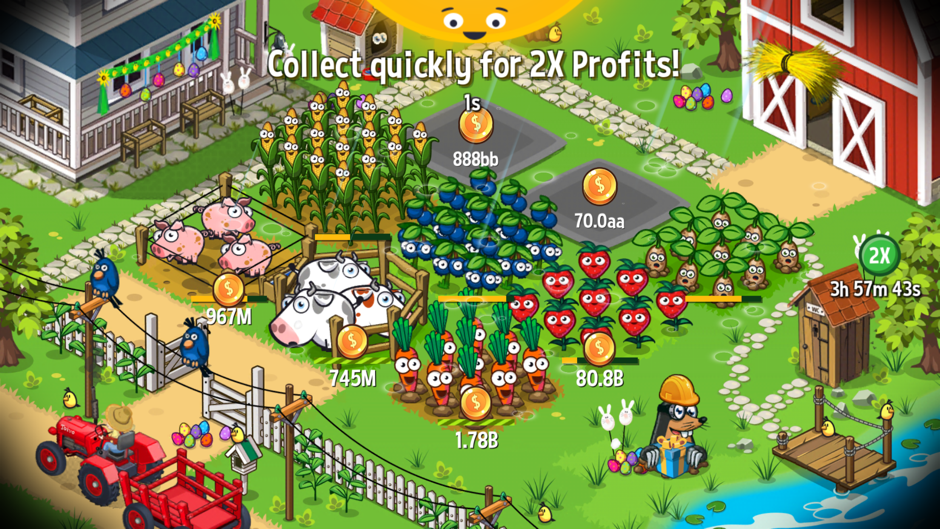
Nobody wants to watch a video ad. So if you’re going drive a full video ad view you need to make sure it doesn’t feel forced (it’s opt-in) and players feel they are getting a benefit from it.
If you think of watching a video ad as a transaction of time (30 seconds) it will help you to design systems that respect the player’s choice. Just as buying an in-app purchase is asking people to sacrifice money to gain progress, here you are asking players to sacrifice their time to watch an advert. Asking players to do this not always possible or preferable, you might be sat on a busy train or having a romantic catch up with your girlfriend. Playing mobile games while having a romantic catch-up with your girlfriend is not advisable or you may find your romantic catch-ups become few and far between!
Therefore, allowing users to opt-in to view your video enables them to choose a time and place to sacrifice their time. People will very quickly learn which features of your game are powered by video ads. The clarity of the trade enables people to opt-in when they will get the most value for themselves. Clearly labelling the reward at the point where you choose to watch helps here. Enabling scheduling and power-ups that each work for different amounts of time enables a player to chose the most efficient trade for them at that moment in time. Having a breadth of options that caters for these needs leads to many more opportunities to view a video. More opportunities give a higher chance that any one of these might convert to a video view.
Making a video ad watch opt-in allows for scheduling, but making the reward feel positive and special will lead to higher conversions. Well designed rewards are those than enhance a player’s experience. For example, a boost to currencies the player would normally receive, increased speed to reward or a dramatic / exciting feature that isn’t normally available. As with in-app purchases, a strong sense of value makes watching the video feel worth it.
Rewards from video ads don’t only need to come from giving away currency or increasing the rate of currency gained. People appreciate novel experiences, limited offers or a chance at a grand prize.
FuturePlay uses 4 different strategies that each create a positive experience for their users. Remember as we discussed in the mobile video ads value chain increasing the number of views per DAU will lead to greater payouts in the end. So from a game design perspective building systems that can support 2-8 views in a single session rather than the classic 1 or 2 can have huge increases in monetisation.
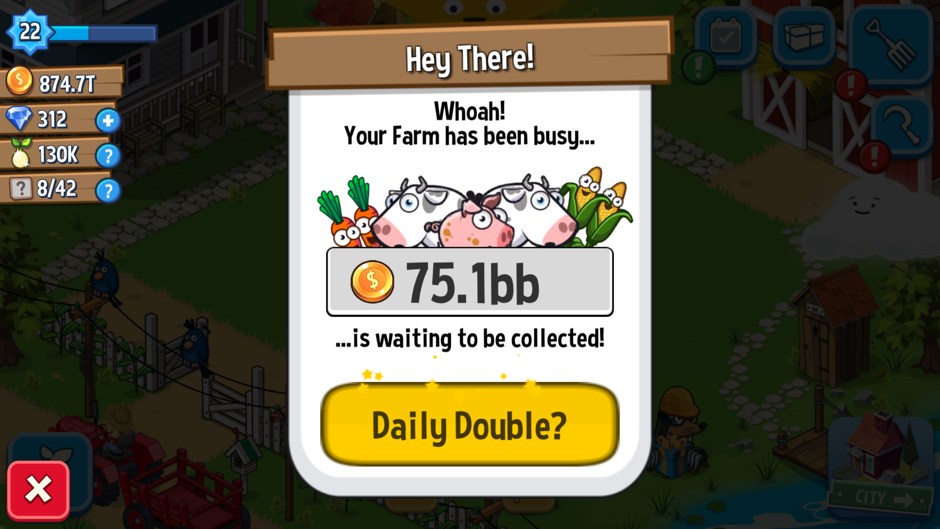
The strongest and most efficient video ad mechanic is the daily double. It offers to double the income you earned whilst away. Although very relevant to Clicker games as currency generation forms the core loop, a similar offer could be used in simulation games (currency doubling) or arcade (energy doubling) to give a highly valuable rewarding upgrade for the upcoming session. This has some very strong drivers:
The daily double effectively monetizes because it is high value (2x) and that starting value grows with time (seconds away from the game). Therefore, however long it has been, this bonus doubles it! 2X feels very rewarding for clickers and as a retention mechanic you get a larger boost no matter when you last logged, making your start feeling great!
Presenting a forced pop-up on appStart before the game begins, increases the % of your DAU which is likely to opt-in. People can only convert (earn you money) to an offer if they see it. People won’t feel bad if the opportunity is opt-in and valuable. As with all free to play designs you know your players are fickle, most players won’t even come back after a single day. Therefore forcing a high value, time-limited opportunity to kick start their game when they come back has the highest chance of conversion. For the view-to-play model to be successful you need to bump your average views per dau to 2-4. The way to do this is to be quite forceful. appStart provides the highest number of opportunities because it’s the first thing people will see.
The daily double is only presented once per session. By creating a scarcity in availability, people perceive the offer at a higher value even if the actual reward might be smaller. Putting people on the spot leads to more conversions. There are a number of psychology articles that talk about the effects of scarcity and it’s been used in marketing since the early 1970’s.
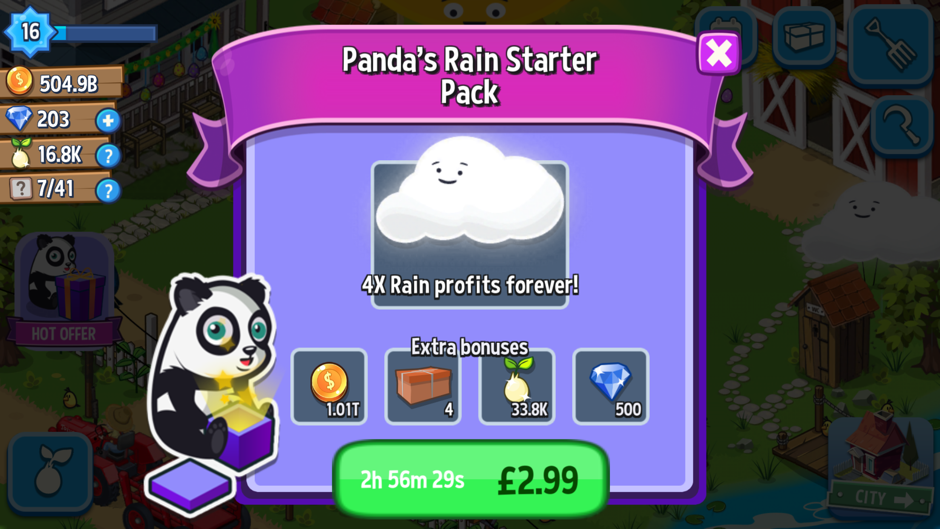
Any offer which is time or availability limited can create higher conversions due to a sense of urgency for players. To be effective the offer system should be presented to users multiple times across multiple sessions teaching people of its scarce nature. The more someone recognises a scarce item, the more likely they will be to convert when they see it. A good cadence for offers like this depends on the value of the reward. Once per session (Daily Double) has high cadence, low monetary value. A starter pack or time limited purchase (new players only) has high value, time limited. A special offer tied to an event or big update has high value and is availability limited can help to convert non-spenders into spenders. Video ad’s work best at the higher cadence lower value trades, whereas IAP works better at high value limited offers such as starter packs.
By creating a scarcity in availability, people perceive the offer at a higher value

Clicker games benefit by being able to vary the rate of earning easily as their core loop supports a huge amount of depth.
By creating a large (2X or 4X) growth for an extended point of time the sessions themselves feel faster and progress feels quicker. This is quite like a feeling of increasing the flow of time (simulation) or even slowing down game-time in an arcade runner where a player’s game is made more comfortable. This form of trade adds value to your session, rather than short and sharp currency bonus’ that are quickly used up.
In other genres, it can be hard to create a similarly powerful video view because you need to keep a tighter grip over currency inflation. You should therefore consider speeding up an aspect of your core loop that encourages more play or more comfortable play of the core loop. For instance in a Base, Battle and Build (BBB) game, such as Clash of Clans, you might opt to increase the training speed of units by 2x by watching a video ad. This encourages more gameplay but doesn’t break your economy, it increases the number of battles played which positively reinforces the core loop.
If you have an RPG or adventure game then you might improve drop rates for 4h after watching a video ad encouraging people to continue to play longer sessions in order to maximise the benefit of the ad. Using video ads to strengthen the number of times a core loop is performed helps reinforce the positive moments and maximise the efficiency of a player’s time, creating a win-win scenario.

People run into situations where they need a little bit of help to achieve a gameplay goal. Creating a novel and fun power up that provides a short but sharp economic boost to help them reach a goal in that session. Futureplay turns this relatively simple power-up into a moment of joy for the player by encouraging them to interact intensely with the core action of harvesting in FarmAway! or collecting income from buildings in BuildAway! 20 seconds feels natural and a user can further increase the value by swiping as quick as possible to get an even bigger bonus.
Positive actions encourage a player to engage
Power-ups like this work by creating large environment changes such as increased animations, novel buildings or rare characters. The aim should always be to leave the user with a positive feeling. Some users may even watch a video ad in order to play the 20s mini-game. Think of a feature that fits your theme and allows people to play intensely for a short period of time, this might be doubling attack speed of a unit or increasing the power/size of in-game power ups in a match3. Think about ways you can trigger an exciting and special moment in your game that is unique but powerful to users.

Certain features within your game might be critical to a player’s progress or score. In clicker games sacrificing your progress for global power ups is core to reusing the loop. Futureplay created a great and simple 24h blocker to prevent instant sacrifice. Players can skip this wait by watching yet another video ad. Patience is a virtue, but enabling players to gratify themselves instantly increases your views per DAU. Endless runners and frustration games use this very effectively to help people continue their progress in an attempt to get the highest score for a single run.
Unique abilities or instant gratification work so long as they are opt-in and don’t break your core game loop. Every game is different but by creating options and presenting them at different points allows people to choose when to feel clever.
The 4 different methods of watching a video are all unique but tied to positive actions that help a player to progress in their game. By providing 4 different features to watch a video, Futureplay has maximised the opportunities for players to watch a single video. In order to really boost their views per DAU, they have made more positive and valuable reasons to watch more than once.
Effectively providing players with more opportunities to engage with video content around a feature will increase your views per DAU. Stacking of video views works well as long as you have a robust economy, be very careful that too many trades for currency or in-game growth don’t break late game systems in the game. When in doubt block players from too much stacking or extends. 2 or 3 stacks is enough for any single session. In this way, you can be sure that players need to keep coming back day after day and engaging with your game over a longer period of time.
At Slush in 2015 Futureplay revealed the Launch DAU and ARPU for FarmAway! Launch numbers and a staggering $0.09 ARPU during the launch window. Although they might not have maintained their high ARPU, it still shows what is possible for games that use the view-to-play model.

Watch the full video of View to Play by Futureplay at Slush 2015 – https://www.youtube.com/watch?v=TE6mF6VCxHA
View-to-play monetisation is now large enough to support gameplay mechanics that don’t work well with an IAP model. The biggest mistake companies make when trying to integrate the model is not providing enough opportunities for players to watch. Each of these opportunities should provide a positive experience either through value or interaction with the mechanics. High-value trades lead to a greater conversion of videos, but be careful that your economy is robust enough to handle this. When looking at your analytics make sure to track the video views per DAU in order to create features that lead to higher views. As the name itself makes clear View-to-Play requires views to generate revenue, use this to guide your development. View-to-Play is not applicable for all genres, but for some, it will be more lucrative than in-app purchases. Be sure to stick to the four guiding principles of view to play and track your video views in your analytics accurately. View-to-Play is here to stay and gives you more options to create financially successful games outside of the standard Match3, BBB or RPG mechanics.
The latest release from Nimblebit features the Bitizens and this time they’ve used an idle/clicker/tapper crossed with a city builder in their new release of Bit City (iOS / Android). I’ve been a long time fan of the Nimblebit team, started by the brothers Dave and Ian Marsh back in 2007 but expanded to a number of other key staff. My personal favourite game of theirs was Tiny Tower, but I’ve also played and churned out from most of their newest releases. Pocket Frogs deserves a design mention as it still has one of the best collection/rarity mechanics of any game that I’ve played on mobile. Nimblebit specialises in creating a collecting or simulation experience around common everyday objects.
Bit City’s core mechanic is an endless economic growth game and the aim of the game is to progress through the 8 increasingly sprawling cities to generate the most income per second.
The clicker or idle genre is one of the more recent but extremely popular free to play mechanics that we’ve seen on mobile. There are some great reasons why the mechanic itself has been present in many large successes such as Adventure Capitalist, Tap Titans or Egg Inc. At it’s core, the loop for a clicker is very simplistic. You’re trying to improve your rate of earning, in order to buy items to increase your rate of earning.
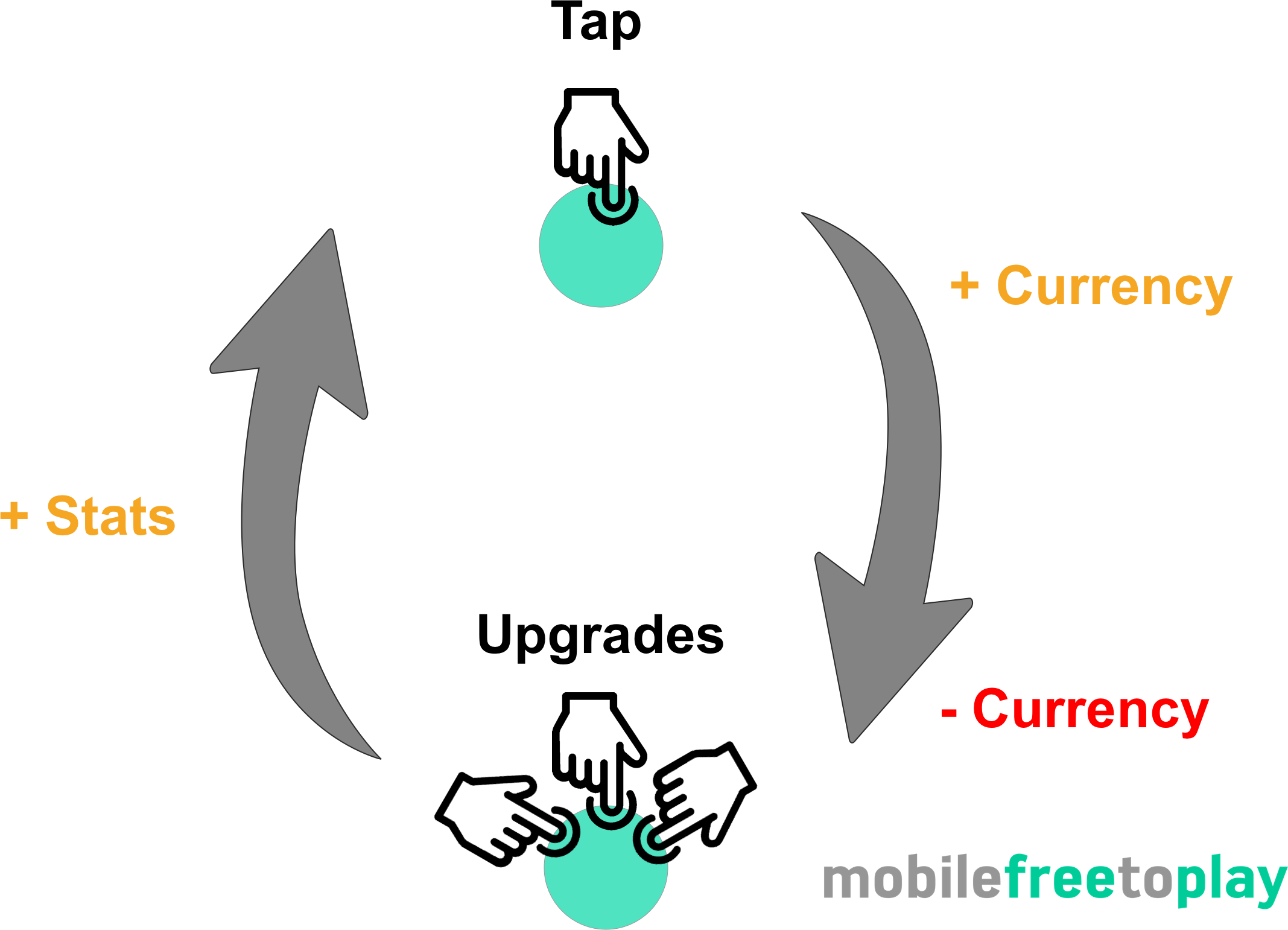
The simplicity of the core loop is both a blessing and a hindrance. The fact that everything you do in the game contributes to making you better at what you do (earning currency) feels very rewarding.
Every action is a positive action.
The hindrance comes when you eventually find the core interaction (tapping as fast as you can) repetitive and boring. In some clicker games, this can happen very fast. So, as a game designer, you eventually shift the player’s motivation from tapping to something that will last much longer. The clicker game genre eventually shifts into a strategy of choosing what to upgrade next. In Tap Titans 2 a player is strategically shifted from upgrading characters to gathering gear, pets or items. All of these have random drops and XP to give much more strategic depth. Upgrading anything feels good, but timing and choice matter.
No one can be expected to be active in a game forever which is where the idle aspect of most clickers come in. While you’re away your game is playing itself, constantly growing your earnings. That way when you come back, a stockpile of cash for you to quickly spend and improve to feel powerful. This happens every time you come back, whether it’s 10 minutes or 10 hours, the size of the stack changes but the feeling of reward stays the same.
The genre itself appeals to a certain type of gamer. Those obsessed with finding the most efficient and time-effective way to improve their progress (in the form of earning rate). Sometimes referred to as min/maxers finding 1-2% efficiency in upgrade choice is rewarding as you are progressing. Yet even the casual player feels good, you’re constantly making progress but at a lower rate. If you’re more interested in story and context then you will often not feel as excited about idle games. It is a game for fans of stats and numbers.
Idle games began on the web with titles such as Cookie Clicker or Cow Clicker released around 2012-2014. 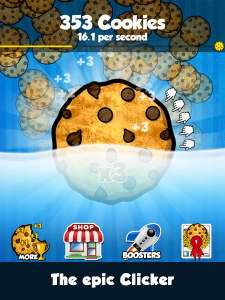 These games were incredibly simple. They drew huge numbers of returning users every day as the objective of “having the highest number” is so clear and powerful for players.
These games were incredibly simple. They drew huge numbers of returning users every day as the objective of “having the highest number” is so clear and powerful for players.
In more recent times games such as Adventure Capitalist, Tap Titans, Farm Away, Make it Rain have re-skinned the mechanic and given a context to the clicking. Context helps with design decisions as you immediately add more depth. Depth provides you with content and that content can better mask the simple stat progression. Player’s decide their goal is to “build the greatest city” rather than to “get the highest number” and this creates a better sales pitch if and when they tell their friends about your game. Context helps you design and it helps you sell, use it to your advantage and don’t neglect it by slapping it on at the end of development.
Bit City provides much more context to the clicking experience by using a city and it’s buildings to provide more visual substance and reference to the core loop. The City Context is a good one, used in multiple genres it’s easy to reference, has great depth and is applicable to people from all countries. Bit City uses this to great effect, but adding Building Zones, Cars, Planes, City Hall and Windmills each contributing to your currency earning.

The core mechanic of tapping furiously on the screen has been removed in favour of the idea of building. One must purchase and classify lots so that buildings of specific type are built. Buildings then fill each lot and the large Build button upgrades and refreshes the building on each lot for a small increase in coins per second earning power. The upgrading of buildings is endless and rather than getting stuck in a content farm black hole, the buildings are upgraded at random. Every upgrade levels up the block and each subsequent upgrade adds 1 second to the total time required to build the next block, leading in the later game to upgrades take minutes. Choice of which block to upgrade is removed from the player through randomisation and the player is taught very quickly that every upgrade is beneficial.
This is a very strong mechanic for a number of reasons:
As a pacing mechanic, it continues to engage at all stages of the game. This is often one area that other clickers loose me on as in the mid-late game, I simply stop clicking…
Simplicity and clarity are always key design decisions for mobile game developers. People spend a few minutes at a time with your game and so everything needs to be clear and make sense in an instant. The choices available to a player in Bit City always relate to upgrades. The most profitable upgrade you can do is buying a new building for your city as each building provides a larger base earning rate. A really nice design feature is the idea of city zoning. There are 3 zones, Residential, Industrial and Commercial. Within this feature is a lot of shallow depth, that is there are a very large number of options and possibilities but as a player, the way they affect the game is incredibly minor. They do not affect the core in any way, they simply provide a route to micro-optimisation, reinforcing the fun of clickers.
Each building zone is balanced by providing a 10% bonus or 10% deficit depending on the overall % of zones, this promotes people to build in an ordered manner. At certain times you may want to opt for larger investments in certain zones because both the Mission system and the City Bonus system provide bonus’ specifically based on type of building built. This is a good use of shallow depth again. Most people would not obsess over the minutiae of which building to build, but to really get the most optimisation at each minute of gameplay it might be valuable to invest in specific zones at specific times.
Another clever design decision is to reward ever increasing premium currency (Bux) by completing missions. Missions usually revolve around building, improving or owning some upgrade or building.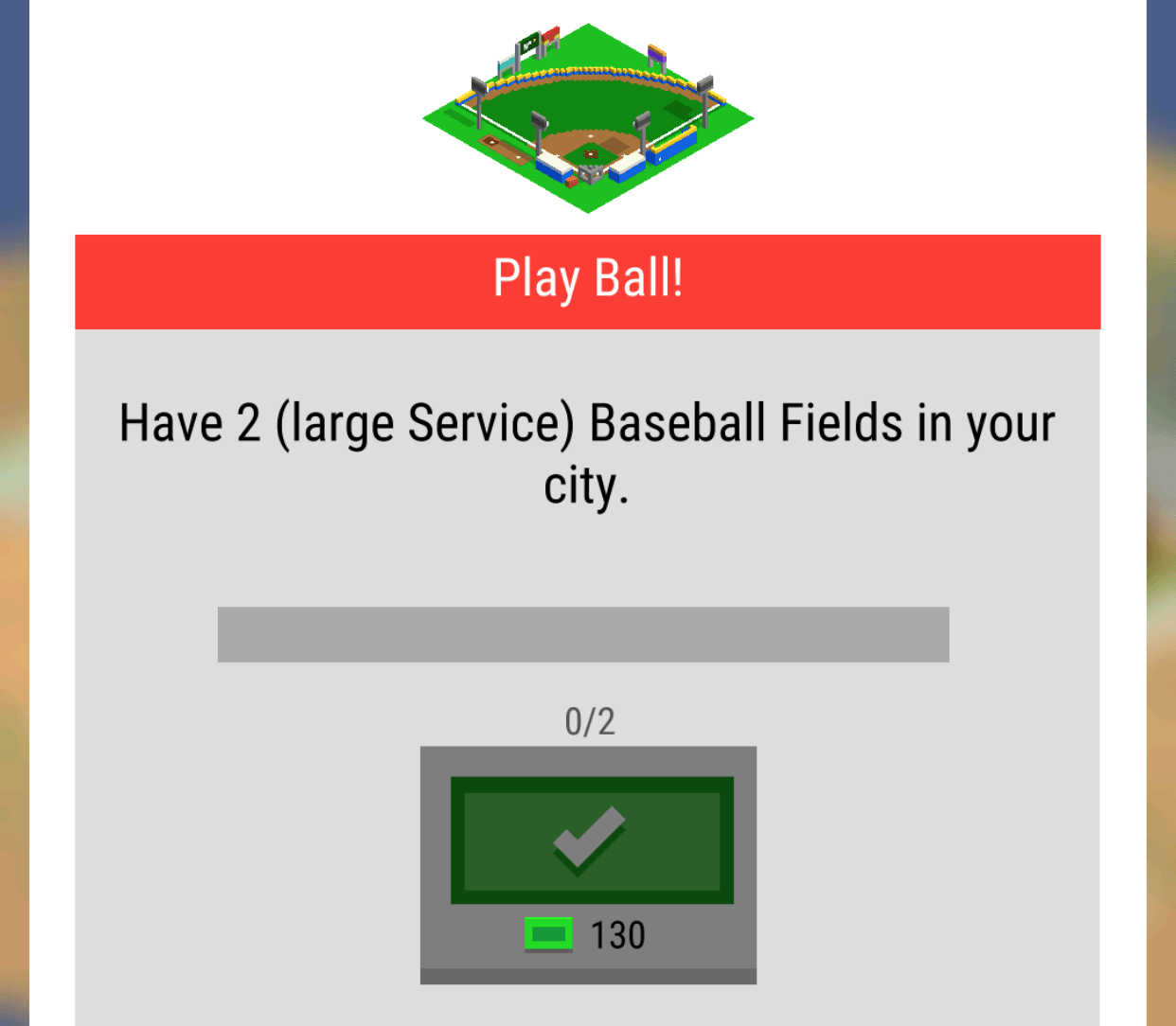
There is only one mission available at a time and they seem to be structured to appear in a specific order. Rather than having a small payout with lots of quick missions to teach people the mechanics, Nimblebit have used missions to give players a longer term goal. The cleverest of these is the ownership of 2 of the same building types i.e (2 Baseball Fields).
Mission systems are one of the classic mid-term progression systems. They provide a steadying hand and a focus for players when options of what to do open up. The best mission systems are usually curated or at least missions are grouped and then provided based on XP level.
The Premium Currency (Bux) are gifted in 10 bux increasing increments. This is risky, as it becomes a significant source of Bux in the mid game. I think the progression is a nice touch but the size of the progression is too high, it would have worked just as well say, 10,12,14 etc. At mission 13 I’m on 130 Bux which is equivalent to $0.13. Each mission can take an hour or more, but sometimes you might complete 2 or 3 in a few minutes. Although it might not seem a lot it lessens the requirement to spend. In the mid-game, it’s most profitable to focus on and perform the mission at hand. Balancing the rewards and spend of the premium currency is definitely one area that Bit City could improve on.
Modern clickers increase the gameplay depth over time in a number of ways. These usually either increase the speed of clicks (Faster), the value of a click (More) or automating the clicking process entirely (auto). Each of these upgrades has a clear and tangible benefit, they help you gain more currency quicker, give your players a choice: do you invest in yourself being active in the game, or invest in the time you’re inactive?
Each city comes with a set number of plots. 4 for a level 1 city, 8 for a level 2 city etc. As you build more buildings you start to max out your plots. As soon as you have maxed your plots a new city unlocks and you sacrifice all of your upgrades and buildings to start again. This creates a clear goal for gamers and eases gamers into the game via small cities. As you progress the cost of each new building starts to become prohibitively expensive which encourages you to want to sacrifice everything in order to prestige to obtain Keys which will speed up everything in your game for the entirety of your play time.

System diagram of Nimblebit Bit City
What’s very pleasing compared to other clicker games is that the speed of progress is managed by a multiple limiting factors. Limits by multiple sources feel elegant rather than a strong single limiting factor. First, the coins themselves slow progress as you can’t build enough buildings, then the plots limit progress on one city as you max them out and finally the cities themselves become prohibitively expensive unless the global tap multiplier is improved by prestiging.
Prestige is very important as it adds ebbs and flows to an otherwise linear progression. Every time you do prestige you suddenly feel incredibly powerful as you race through early content, this is important as rather than having to create more complexity players are re-engaging with the game and reinforcing the simple systems of the game and progressing incredibly quickly. Bit City has created “mini- prestige’s” every time you upgrade to a new city once you have maxed out your plots. With every reset there is a sense of loss but also a sense of growth, getting your players used to this feeling helps them engage with the main Prestige mode.

In the mid to late game idle games, prestige currencies become the main goal in Bit City these are Keys. It’s very important to get the balance and the feel of Keys right. In Bit City, Keys feel underpowered as the quantity of keys provided when you prestige is too small. A user wants to feel progress at close to double the previous rate when they sacrifice all of their upgrades. Doubling up whilst keeping a logarithmic increase in the power curve of costs equates to half the time spent getting back to where you previously were. One you reach your old position the logarithmic power curve kicks back in and really winds back a player’s progress to a snail’s pace forcing them to prestige again.
A player chooses when to jump to the next prestige level and effectively picking at the right time can jump you onto a much more powerful curve. Great game design in this area wouldn’t use perfect logarithmic numbers but would add some randomness and inconsistencies to make it a guessing game for the player to find out if they are maxed out at an inefficient area of the curve.

Time taken to reach a city in bit city. Prestige levels and number of hours are representative and not factually correct.
It’s not mentioned in mobile how important the user interface is for a game. Especially in these management style games with large amounts of details, getting information across clearly and concisely is a challenge on a small screen. Nimblebit do a number of great reinforcements.
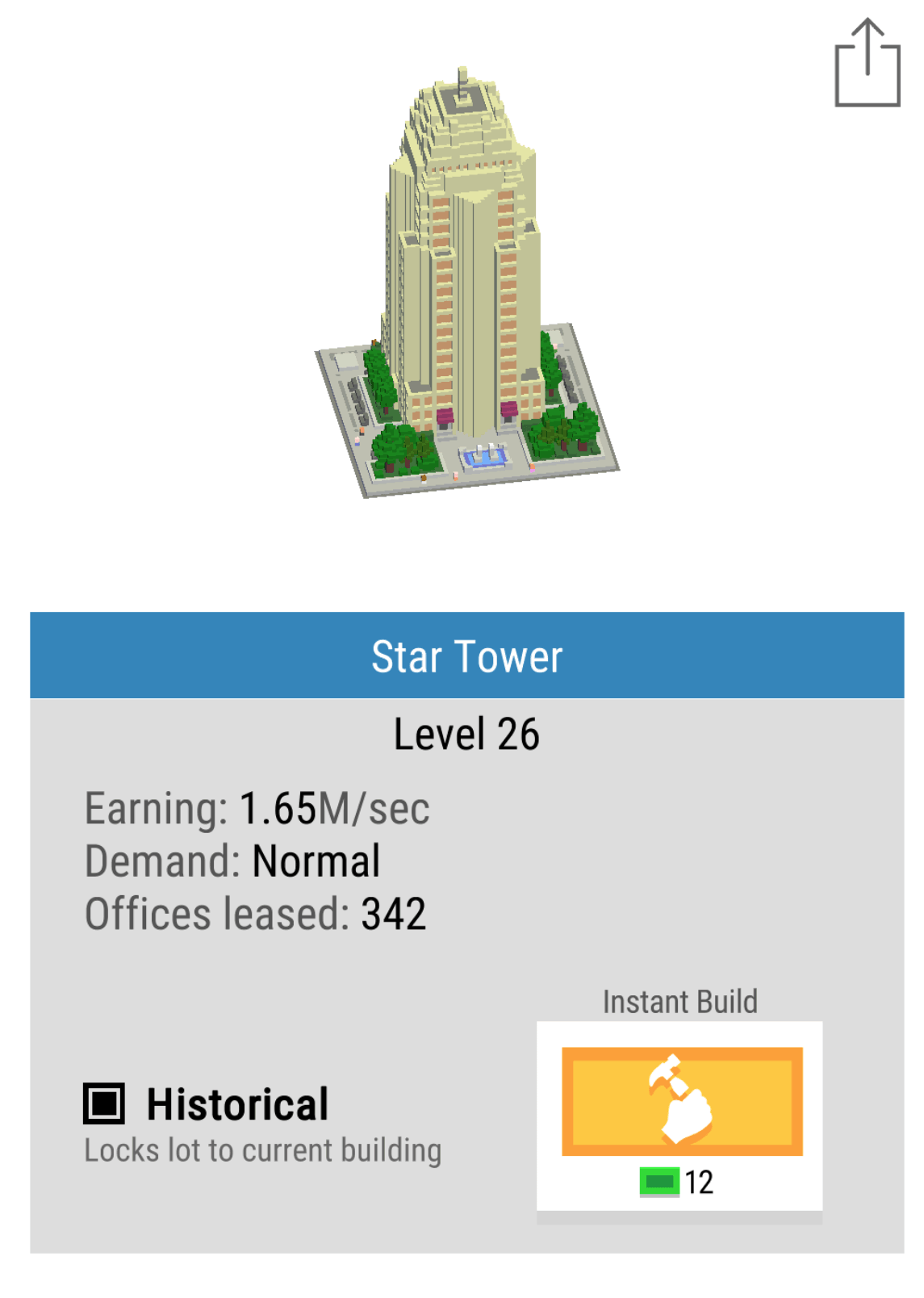
This attention to detail of the user’s journey removes frustration from the game. It allows you to choose where to focus your attention on to complete one or two of the tasks at a time and speed up your progress. A nice font and simple language make it enjoyable to read.
I’ve spent $10 so far in Bit City. For that, I got 10,000 bux. Bux are the only premium currency and are used to speedup progress, buy city upgrades that persist through prestige mode as well as unlocking certain famous buildings that provide enhanced bonus’. I feel that this was the point where the game design suffered.
I suspect the number of people purchasing bux will be low, simply because the number given out in-game is very high and people can immediately get a sense of what it would be like to have 1000s of them by spending a few hundred that they got for free. Games with great conversion rates keep the pressure on players to want to spend by constantly showing the value of having premium currency to progress. Bit City treats bux too loosely and as such the pressure to get my wallet out is low.
I suspect that the game’s primary monetization route would be video ads. There is currently only one method to engage with a video ad through the opt-in button called “Double Time”. The value proposition here is strong, for a short period of time, double everything. Directly doubling the speed of progression is the best feeling for a player because it directly contributes to that core loop. Things that feel great in-game are strongest when they contribute to your progression directly. Clickers, by their very nature, are all about progress and so the reward is clear and easy to feel.
Unlocks happen more regularly I can build more buildings and progress shows a real gain. The upgrade itself is time limited to 10 minutes but with bux can be upgraded to 15 or more minutes. This again is a clever gamble as by getting people to potentially invest in an IAP they then encourage more video views, which if you remember is a key KPI for increasing monetization from video ads.
The major issue here is that there are not more ways to engage with video to improve those views per DAU that lead to more revenue. The 10-minute bonus is strong, but what about a 4h increase in the Bank Savings rate? Watch a video ad to upgrade a building directly would provide so many more places that a user could click the Watch button, increasing its adoption. The classic Double Up bonus for all returning players could be run once every 24 hours in order to highly incentivize at least one valuable video view per day. There is huge scope for expanding video ads integration.
Bit City is a great example of expanding clicker mechanics into new genres. City Building and Clickers make a great match because of the depth in buildings and environment that are available to the team. Nimblebit have done a really good job of pacing the game across multiple cities causing you to have clear evolutions in your progress as well as allowing you to prestige at any time, making it your own decision. The type of upgrades and the thematic choice of upgrades fit nicely, all contributing to a busy and bustling city experience. The UI and UX of the game itself is also neat, simple and clear making playing the game an enjoyable experience.
The game’s biggest weakness will be its monetization. It’s very loose usage of Bux as a reward currency and the fact that players can only interact with video once per session without enough cues from the UI. The value of that video view is high so it should see good usage, but providing your most engaged and active players with more ways to watch would see many more views per DAU.
The games a great addition for the Bitizens and well worth a play!
Idle games are an exciting new genre that I expect to expand greatly in the coming years on mobile. Idle games, Clicker games, or “games that play themselves” is a baffling genre. Inexplicably these games are dominating many of the popular flash portals and shooting up the charts on mobile. Make it Rain by 337 Games, Tap Titans by Game Hive and now AdVenture Capitalist by Kongregate have all shown that this genre has a rightful place on the AppStore.
But why is this genre so popular? Why does this genre even exist? Why even discuss games that people don’t really play?
Idle games have risen on mobile because this is a genre that is perfect for modern mobile free-to-play design. The mechanics of idle games create perfect mobile sessions and drive strong long term retention.
Idle games, sometimes called Clicker or Incremental games, are games which are all about management of revenue streams. Similar to simulation games, their main differentiator is the focus on revenue growth decisions.
For some examples:
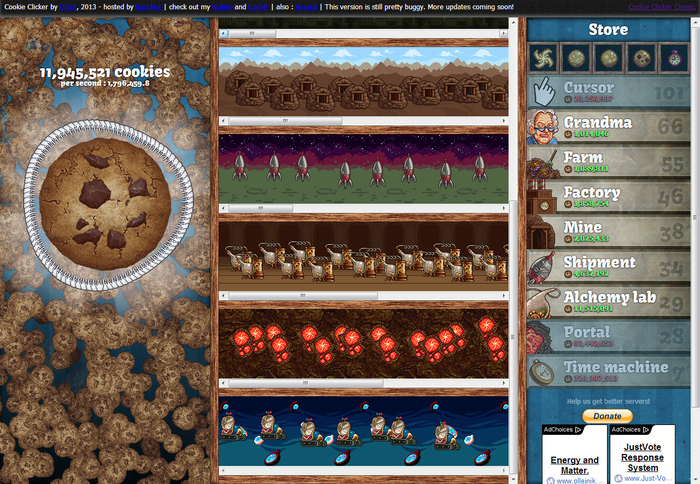
Cookie Clicker : http://orteil.dashnet.org/cookieclicker/
Cookie Clicker is the best example of an idle game. Each time you tap the cookie, you gain 1 cookie. You use cookies to purchase upgrades. Upgrades increase either the rate of tapping the cookie (now you get 2 cookies per click!) or increases the rate of cookies generated automatically (Grandmas will make 1 cookie per second). These automatic cookies are generated whether you are tapping or not. They are generated even if you’re away from the game.
On paper this sounds too simple to be fun. But try for yourself. The simple act of purchasing an upgrade always feels great. The growth curve is so fast it gets very addictive, very quickly.
Progress just for the sake of progress is fun. Even if it only means a virtual number increases faster.
Rate of resource generation is the core of the game. But an economy that inflates so quickly with a single currency has flaws. Very quickly, the game’s upgrade costs skyrocket. Starting off with nice low numbers the game quickly skyrockets into costs of trillions just a few sessions in. Most designers would cringe at this type of growth curve. What kind of player wants to worry about numbers in the trillions? In AdVenture Capitalist, your costs will eventually reach more than 1 Tretrigintillion (10 to the power of 102). Yet, players love this. Progress always feels good. Players playing for long enough to reach these ridiculous numbers feel like it is a real accomplishment.
As a result, Idle games have claimed 3 of the top 10 most played games on Kongregate (source: here). There are even Twitch channels dedicated to watching a computer play a game itself. Inexplicably, this genre has seen incredible growth.
Regardless of your stance of whether or not this is a “real” game genre, the mechanics in Idle games are perfectly realized for mobile. Idle games can teach mobile game designers a lot about creating a game that has strong session design. Idle games are so strong because:
Many mobile games suffer gameplay mechanics that feel punishing on returning to the game after leaving for a few days.
In FarmVille: crops wither. If you do not come back to the game in time, your crops are worthless. In Clash of Clans: resources are stolen. The longer you are away from the game, the more likely a majority of your precious resources are stolen. Your rank on the leaderboard could be lowered. Your Clan becomes upset that you haven’t donated enough troops. These mechanics are all strong at driving reasons to come back, but also creates reasons for players to quit.
Idle games don’t suffer from this problem. Each time the player returns to the game, they are left with a massive stockpile of cash. It always feels like a bonus that they left the game. If a player leaves for a day, a week, or a month it only increases the amount of currency in their stockpile. In most economies this would be troublesome. Not in Idle games. Because the growth curves are exponential, leaving a game to infinitely generate a low income rate is absolutely fine.
For example, lets take 2 players. Player A comes back every day. Player B skips a week of play. Both players are generating 1 million cookies per day at this point in time. Player A, the active player, returns day 2 and receives 1 million cookies. Player B, who skipped the week, returns to have 7 million cookies. Player B can clearly purchase far more upgrades than Player A. Player B actually feels very rewarded for leaving for so long — they are rewarded with a very long session which they can purchase many things. However, comparing the growth curves Player A purchased many upgrades on that second day. So Player A by day 2 is already at a new growth rate of 10 million cookies a day. Player A is clearly growing far faster than Player B, but both players (because its a single player game) feel they made a smart choice. Player A is rewarded with faster progression. Player B is rewarded for waiting so long. It always feels good to return, but returning more often gives you faster progression.
Mobile games should strive to create this feeling. It should never feel like a punishment to come back to the game.
Players should be reminded that coming back often is a benefit, but coming back at all is always a bonus.
For this reason most farming games have shifted away from FarmVille’s model. Instead of withered crops, there’s low storage limits. In Clash of Clans, they incorporate shields and enforce looting limits to make sure players dont feel that not coming back feel too badly.
Coming from my previous post on Flexible Sessions, the perfect mobile session finds a way to naturally push players out of the game. This is necessary for pacing and long term retention. Strong mobile games give strong reasons to come back (see above!) and strong reasons to leave the game. Idle games have mastered this natural prod of players out of the game.
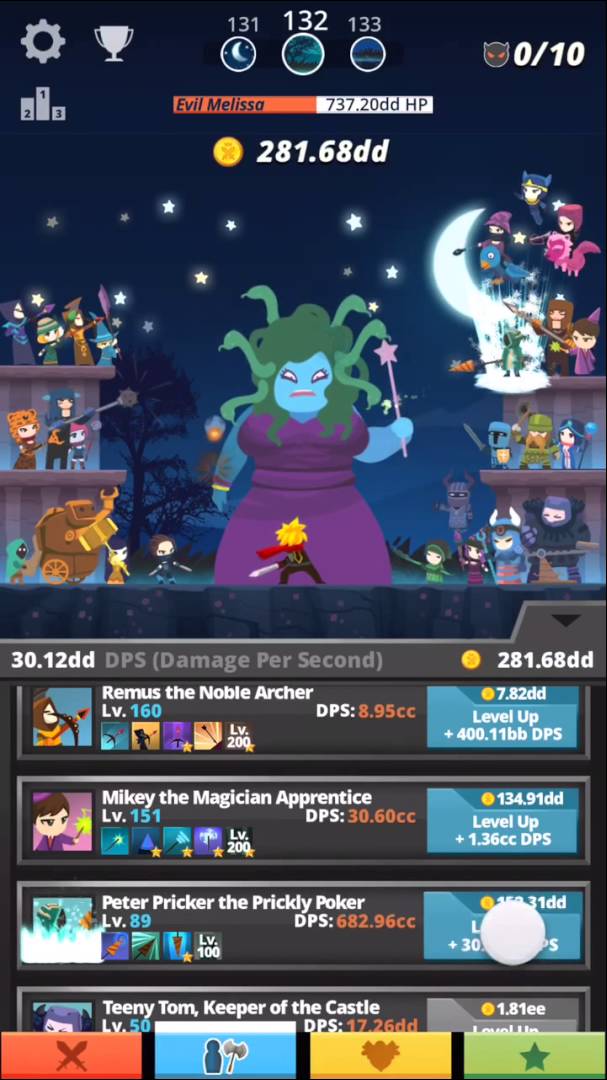
Offering lots of purchasing options creates the session design. There is always something to purchase, but eventually the smart choice is the one where the player must wait.
As Idle games push players to invest in automatic revenue generators (ex. Grandmas in Cookie Clicker) over manual revenue generators (manually tapping on the cookie), players inevitably will reach a point in the game when they just have to wait. The player can purchase small upgrades fairly rapidly, but they know to make the next big leap of progression its smarter to purchase the more expensive upgrades. So, they leave the game feeling smart about their decision.
This is the exact point which the player, themselves, have opted-in to leaving the game. Naturally, the game has prodded the player to leave. Mobile games must strive for this. Create a situation which the player feels smart about leaving your game. Idle games have even managed to do this without timers, without social appointments or any other tacked on system as discussed in Player Commitments.
Create a situation which the player feels smart about leaving your game.
The first experience of a new player is very simple. In Clicker Heroes: A player just madly taps an enemy monster. In Make it rain: A player flicks heaps of money into the air. The first experience is addictive and immediately fun. Its obvious how to get better – tap or swipe faster. Players quickly master this mechanic and it feels natural. However, this mechanic’s interest quickly burns out. After the first few sessions, players are quickly tired of having to manually collect.
This is when the game offers a bait and switch. You came for the simplicty of tapping, but what you’ve been given is a game that is all about managing resources and upgrades. Players shift from tapping to managing which upgrade to purchase next. This clever switch means players that would have been burnt out from the simple mechanic are now thinking about long term decisions in the game. Which upgrade is the best value? How do I optimize my growth?
Mobile games must master this bait and switch. Players expecting to come into any mobile game will expect some core gameplay that mimics what they’ve played in the past. Playing bejeweled for Candy Crush, playing command and conquer for Clash of Clans, or platforming for King of Thieves. However, as a free-to-play designer your job isn’t to just hook these players with fun intial mechanics. You need to find ways to retain these players for years. The best way to do this is to switch the player from focusing on second-to-second core gameplay (tapping cookies) into longer term decisions (optimizing progression). Idle games clearly show a blueprint of how to accomplish this, regardless of the core gameplay.
Idle games are big and going to get bigger.
Anthony Pecorella gave an excellent talk at GDC 2015 on Idle Games summarized here. Clearly with the success of AdVenture Capitalist, Tap Titans and Make it Rain, more developers are taking notice.
The genre is ripe for innovation. Recently CivCrafter came out. A take on the idle genre with multiple resources and battles. Tap Titans has shown that the genre can apply to the auto-rpg genre. I believe that the progression systems in these games can really be applied to any genre. Replacing the core game play with a puzzle mechanic, an RPG battle mechanic, a Simulation theme, Arcade gameplay are all possible angles.
The key is to design the bait and switch: give the players the game play that is addictive and fun in the beginning, but eventually nudge them into purchasing the automatic resource generators. Players can then make the choice between grinding the core gameplay, or leaving and gaining the benefit just by waiting.
Get ready: the future will be all about games you don’t play.
More and more games now are adding modes where players no longer even need to play.
Players can simply open up the app, start a round, flip a switch, then put their phone down. The AI will make all their decisions. The AI will have all the fun while the player waits for the virtual reward at the end of the round.
At first glance, this is worrying. This turns the game into a Skinner box. Tap the button, wait, get a reward. Where is the fun in that?
Instead of making the core battle so boring that auto-mode is necessary, shouldn’t designers seek to add more depth to the battle?
No.
Focusing design on in-depth core game mechanics is a losing battle.
Focusing on making long-term decisions more interesting is a much better strategy for free to play games.
In the RPG Genre, having an interesting battle mechanic provides the hook for the game. This is what draws players in and immerses them in the world. If I have no option of control, then this isn’t really a game.
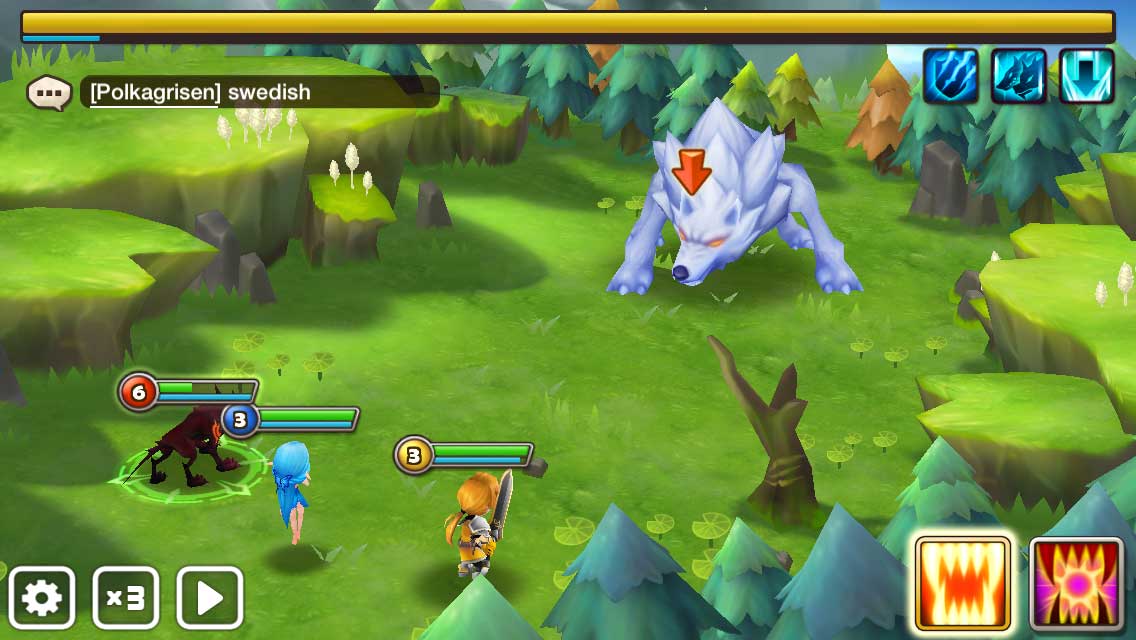
When a player starts a battle, they expect to make choices and see their impact. Having novel mechanics in the battle provides early players with a new experience that they have never had before. As seen above, in Summoner’s War, in the beginning, you have choices for each of your players of where they need to attack. This is engaging at first, but quickly goes stale. This isn’t the focus of the game.
Secondly, it really showcases the artwork. Your artwork sets the expectations right from the beginning. A player is only willing to invest in games that feel polished, exciting and professional. Making sure that players experience as much exciting battles in the beginning is important.
However, as they play many battles, inevitably the mechanic will get boring. Inevitably the artwork will get repetitive. There are few games in the history of game design that have ever managed to keep a core game mechanic interesting thousands of times repeatedly (ex. Tetris, Chess, Collectable Card Games). Especially in a non-multiplayer context, in a casual game, and even more in a mobile context where the interaction complexity possible is limited. In theory this could be done, but it would be incredibly difficult.
So how do you keep the gameplay interesting for the long haul while still allowing for a great initial experience?
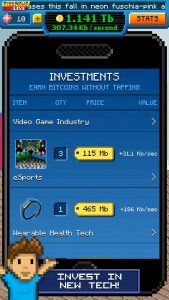
Bitcoin Billionaire is in a weird genre. I’m not really sure how to label it… It’s part simulation, but mostly an “Endless Progression” style game. Your goal is to try to collect as many Bitcoins as possible by tapping the screen.
Initially there is the appeal of just madly tapping on the screen. Each tap gets you 1 Bitcoin. You strum your fingers across your ipad watching your money go up. You’re so good at this!
But after about 30 seconds this starts to become a bore (also your fingers are getting tired!). So now the game starts to push you into making investments: earn Bitcoins while you’re not tapping.
What this does is ease the player away from a newly-boring core mechanic into something much more interesting: managing investments and optimizing the rate of progression. Bitcoin Billionaire has done an excellent bait and switch: you came for the tapping, but now you are addicted to buying income sources. Cookie Clicker, Make it Rain, Clicker Heroes and Bitcoin Billionaire are four excellent examples of games that have managed to ease a player from a boring core mechanic into something that is much more interesting in the long haul.
This transition is exactly what all games need to deliver for successful long term retention. So how do we add this to other genres?
Auto-battle is how its been added to the RPG genre. Eventually the game recognizes that making choices in the battle is no longer interesting. The bait and switch becomes making the choices outside the battle more interesting than the battle itself.
But Auto-Battle isn’t a trivial system to add. Like all design decisions it comes with benefits and consequences.
There are 2 questions to ask if an Auto-battle system will work with your game:
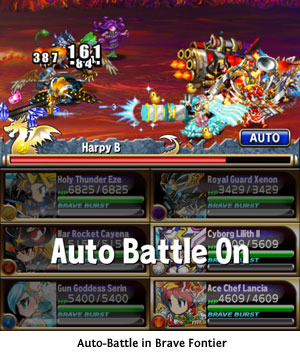
Auto-Battle as a system essentially means that a player will make a choice about which “dungeon” to enter, then leave their phone on and come back to it after a few minutes.
Is this valuable to your session design? Players just opening your app for long periods of time? It will effect your KPIs — your session length will go up. But is that really what you want in the design? Successful games push players to return to the game often throughout the day and focus on meaningful choices. So why demand that they keep the app open during the battle?
Job Systems in games have been around for quite awhile. They reached a peak with games like MafiaWars in the early days of Facebook. A player would send their units on Jobs. Tap a button, and the unit would be disabled for a limited time. When the time was up, the rewards for the action were given. This was a nice appointment mechanic that allowed players to opt-in to coming back to the game. If the game was only job systems however, the game grew stale. But what if a Job System replaced the need for auto-battle?
What may be more interesting is asking the player to make a choice: Do I send my fighters out without my control for 5 minutes, then return with the loot? Or do I think the AI will mess up this battle, so I should do it manually for the next 10 minutes? This way players can make a choice whether to end their session and come back later, or improve their chances of winning by playing the actual battles manually.
If the game is really distilled down to a few taps each day this can get boring quickly.
Grinding for rewards and items is only fun when there is significant complexity and depth to collecting items.
By adding auto-battle in the game, this will put much more stress on your long-term meta mechanics. Do your players have enough interesting decisions outside the battle that will last for months?
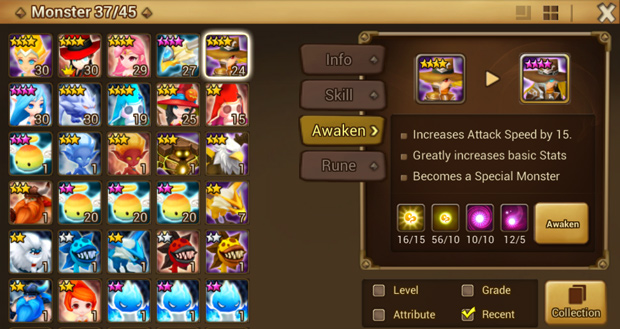
Summoner’s War has Relics to provide interesting decisions in how you upgrade your players. Brave Frontier has the boosting and fusing mechanic which provides years of collection and interesting long-term trade-offs. Many games have a very in-depth loot system which makes for interesting decisions choosing which gear to keep.
However, even with a strong loot system with collection, players need an indicator of progress. They need to be immersed in your setting, story and game. Having an auto-mode is great, as long as eventually players will be pushed to an epic boss battle. A battle that surprises them, challenges them, and maybe even progresses the story. This will be necessary wrapper around the grinding that makes it all worth it. These auto-battles end up building anticipation to something new and exciting for the player.
In the end auto-battle lets players focus on the choices and decisions that matter to them, no matter what stage of the game they are in.